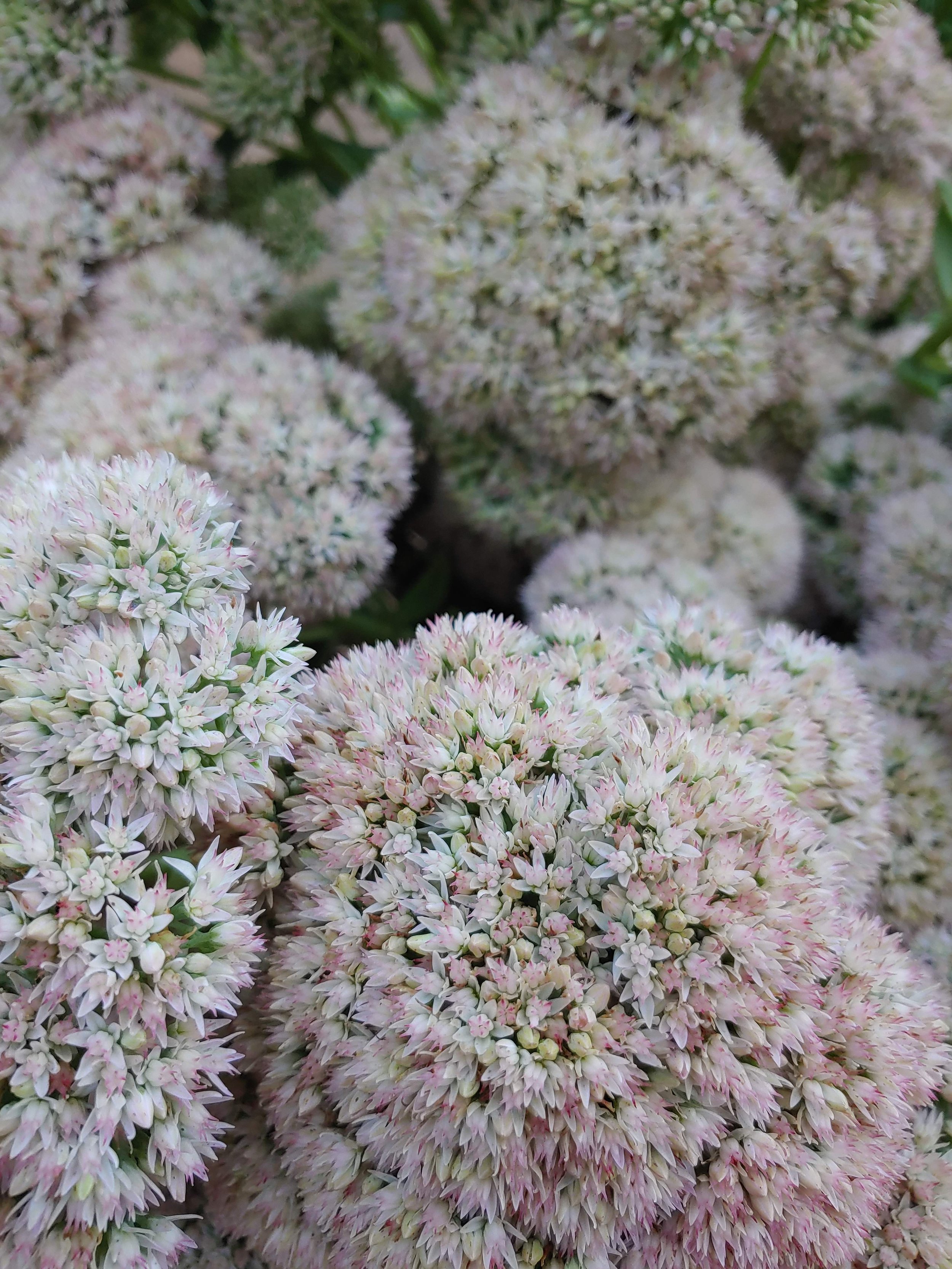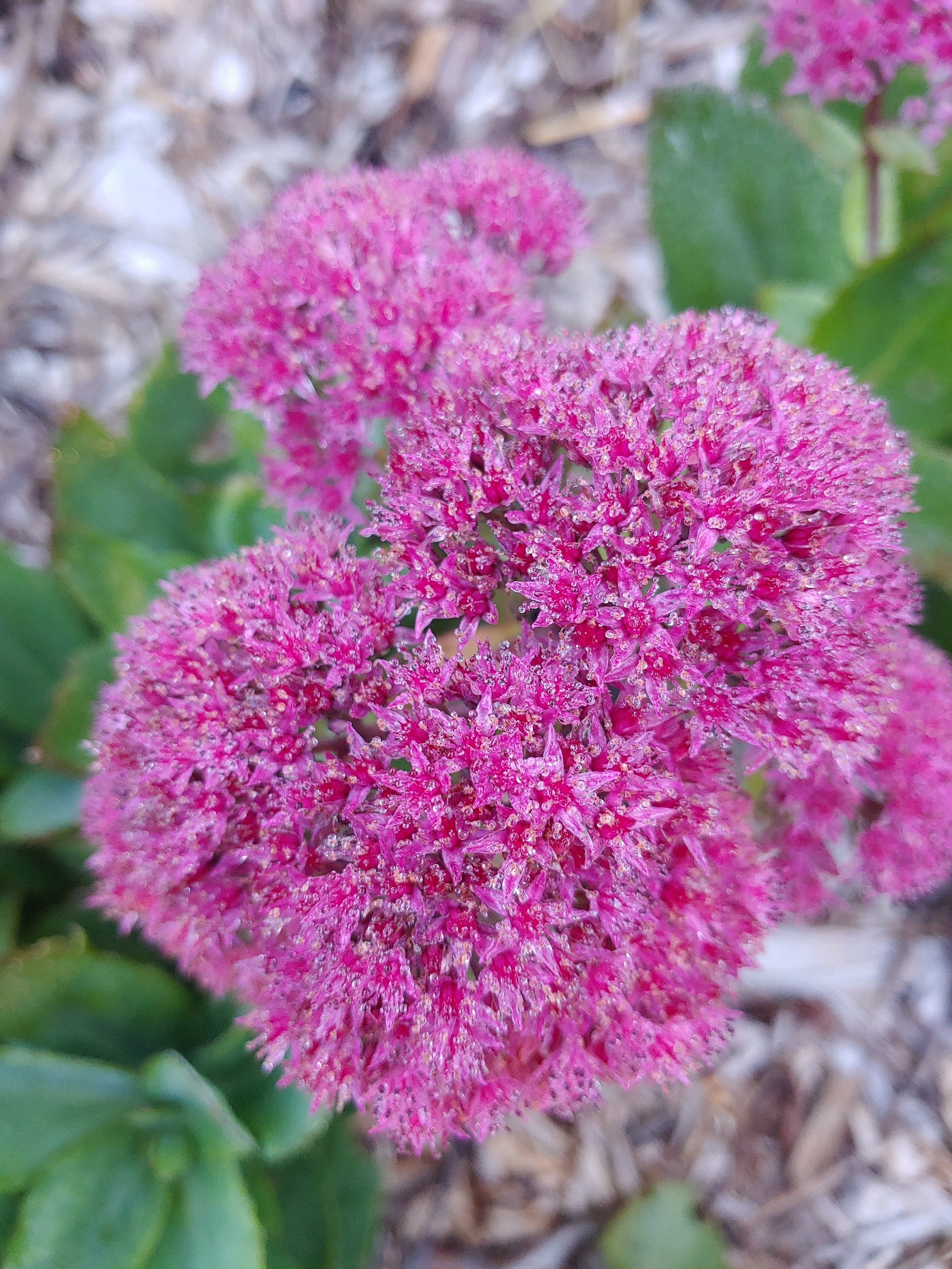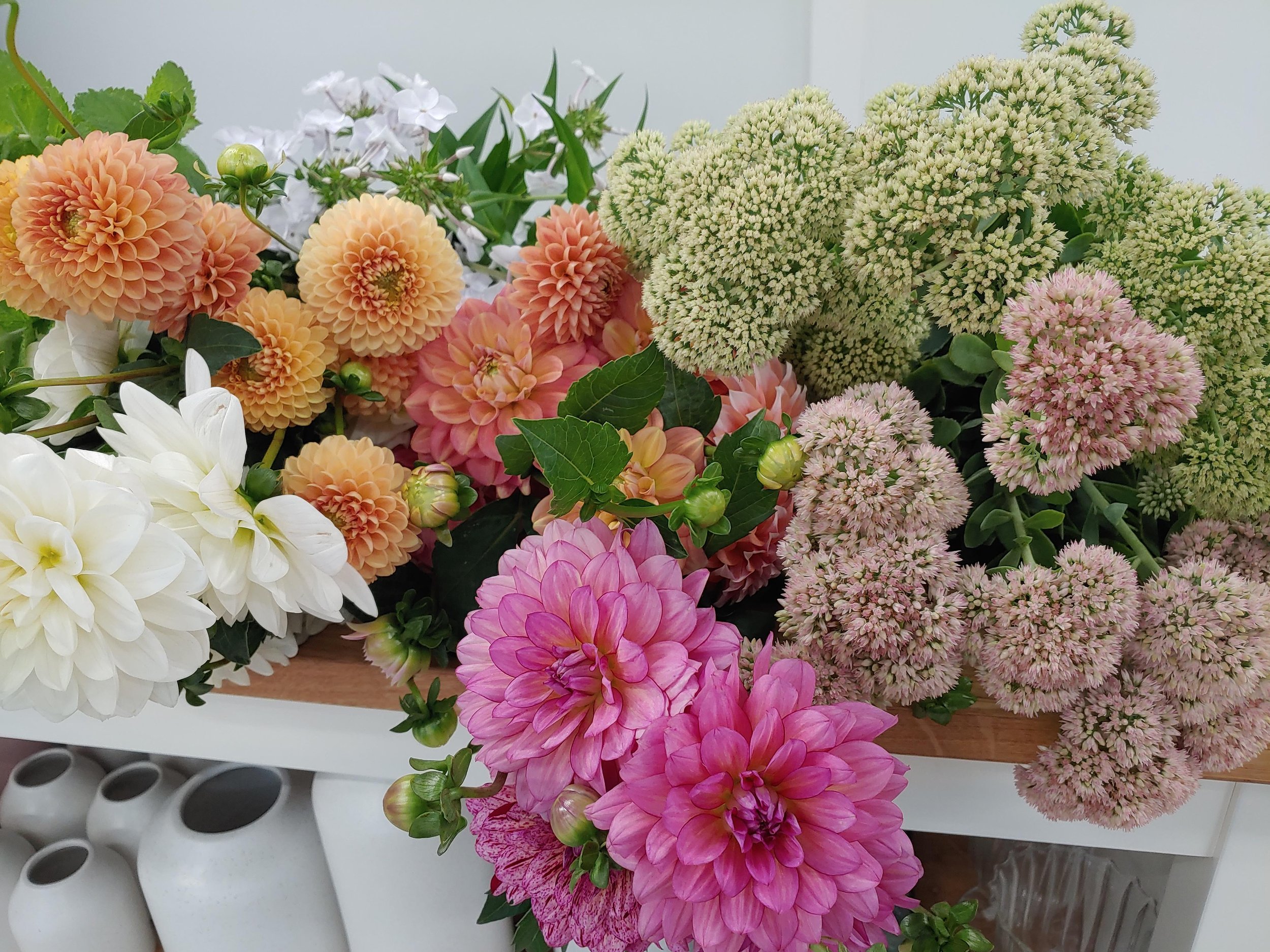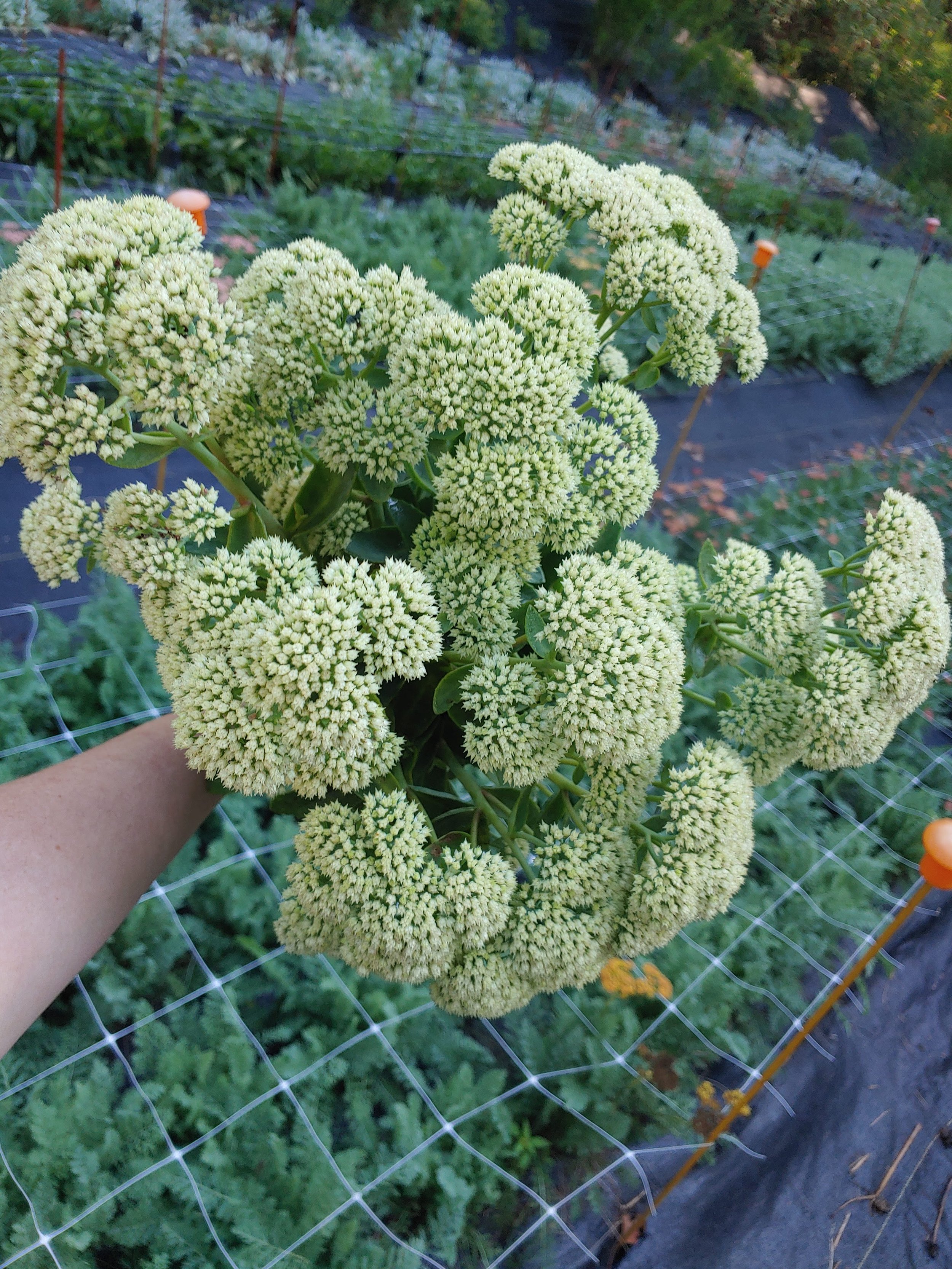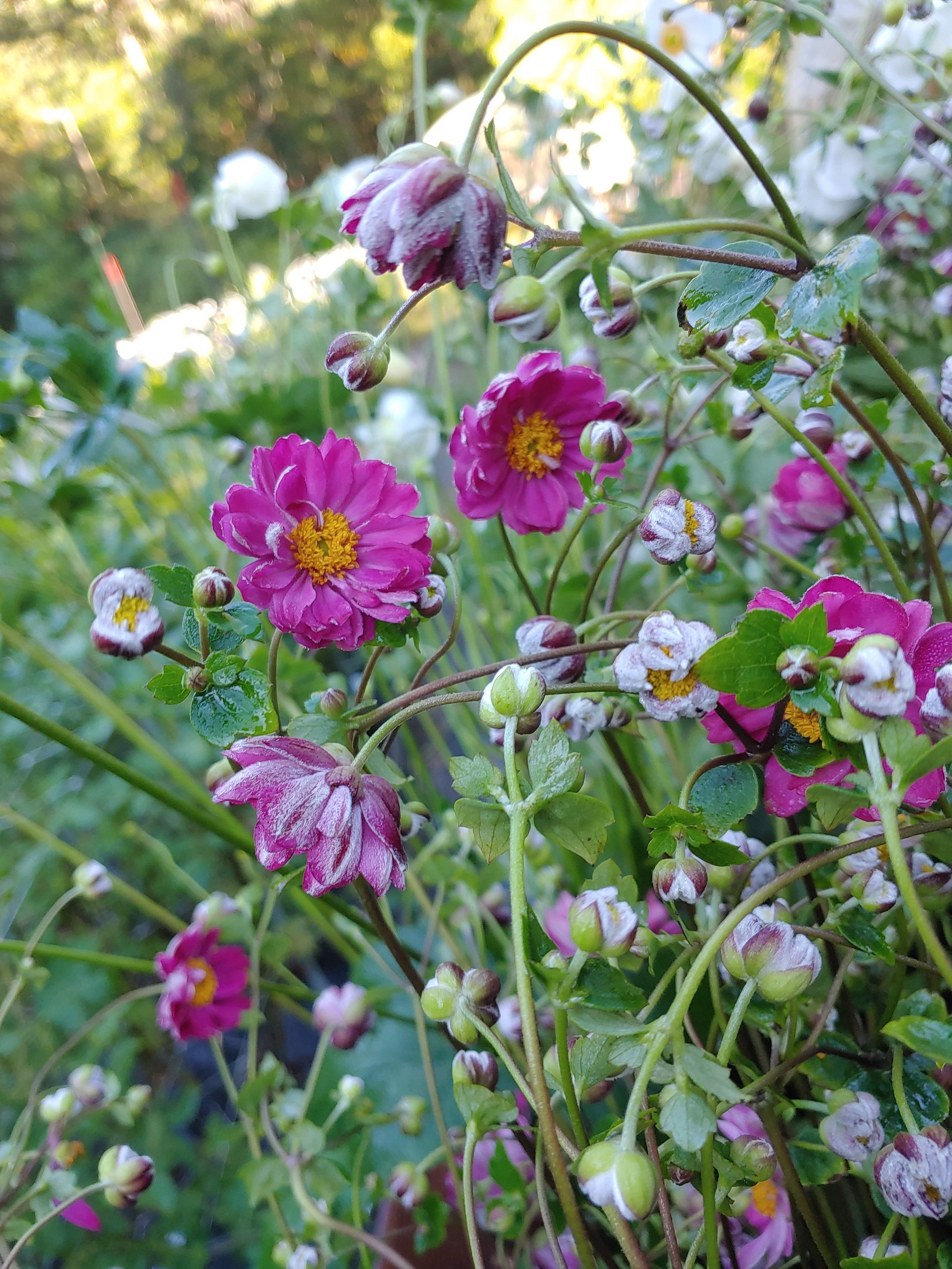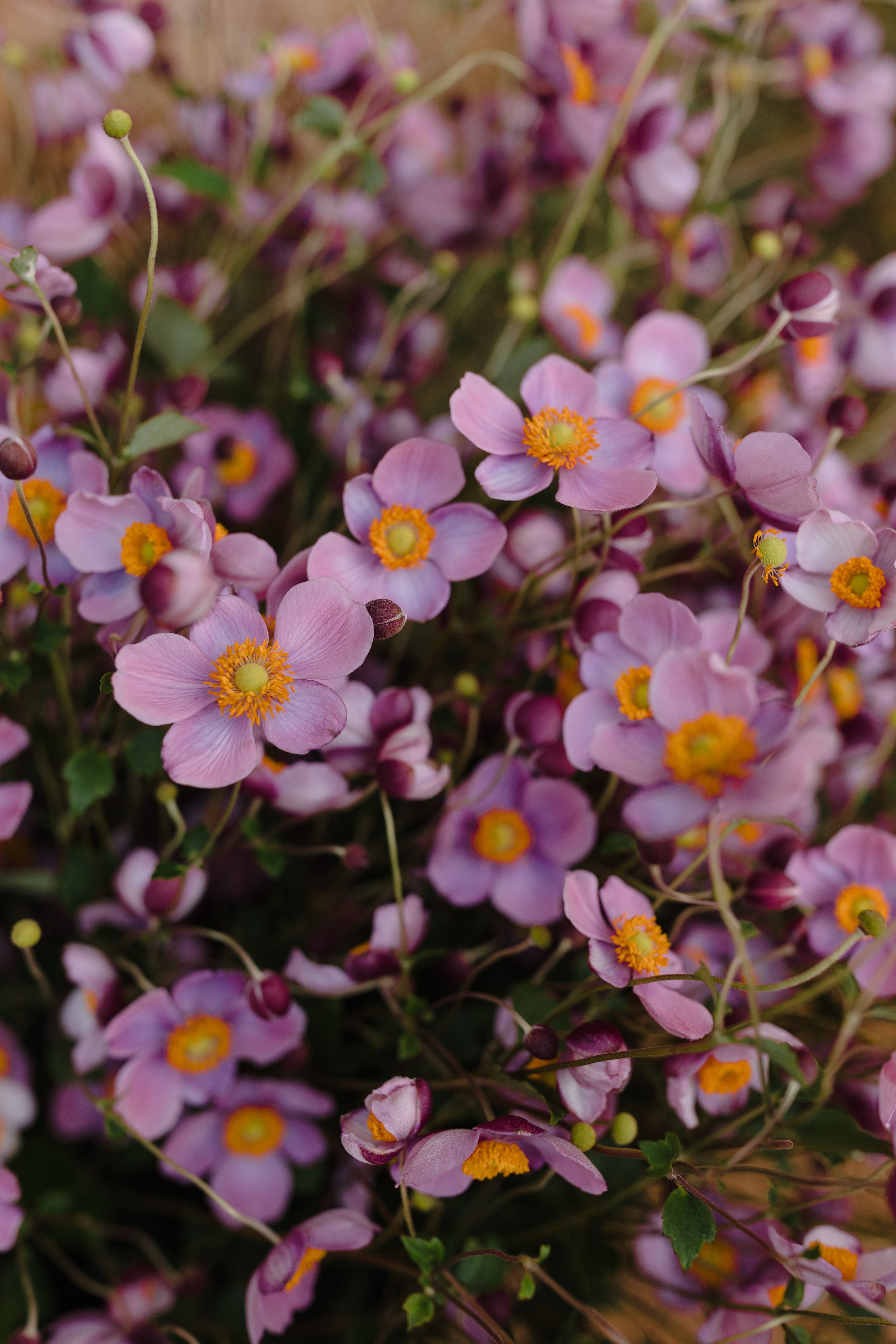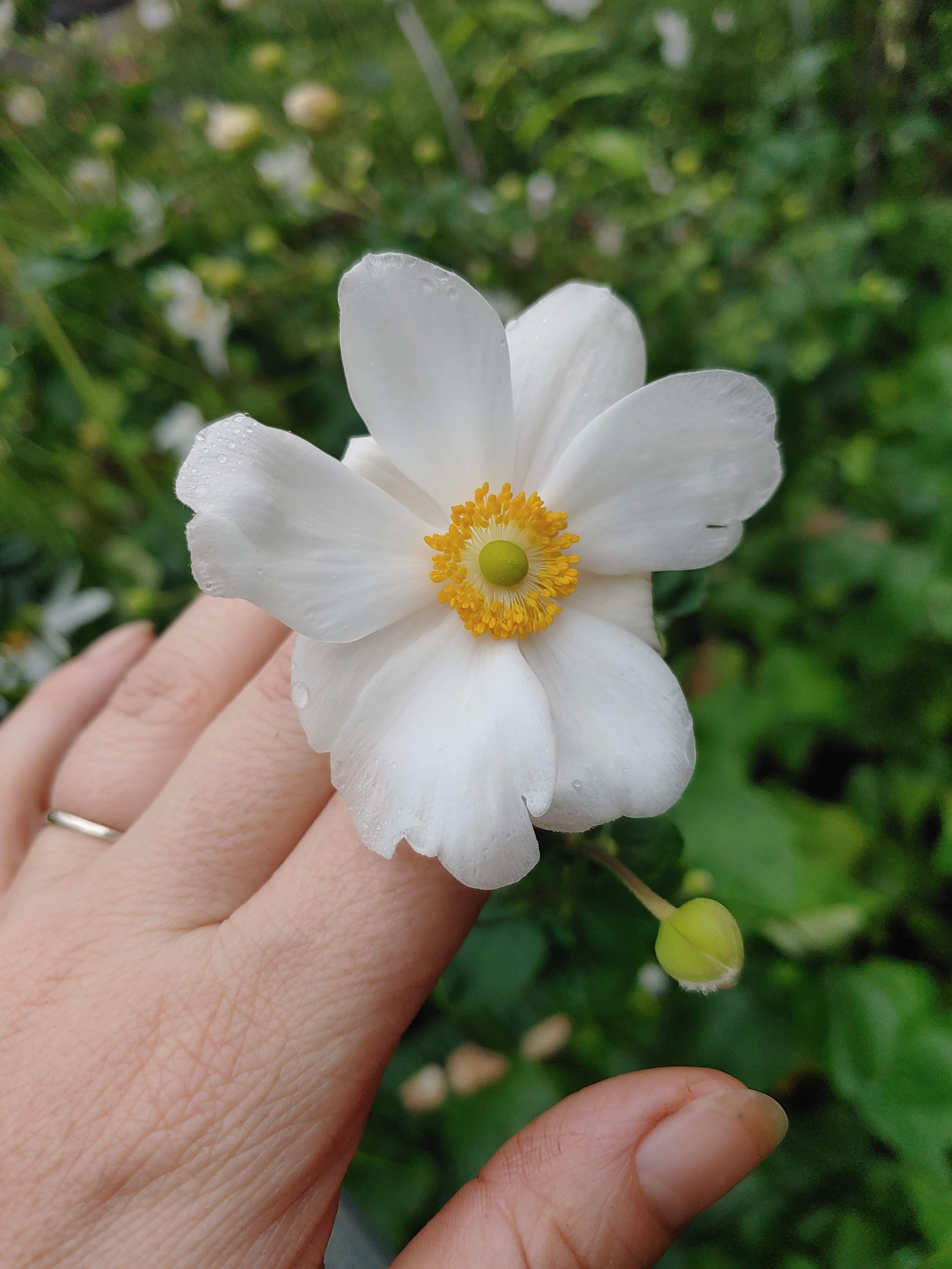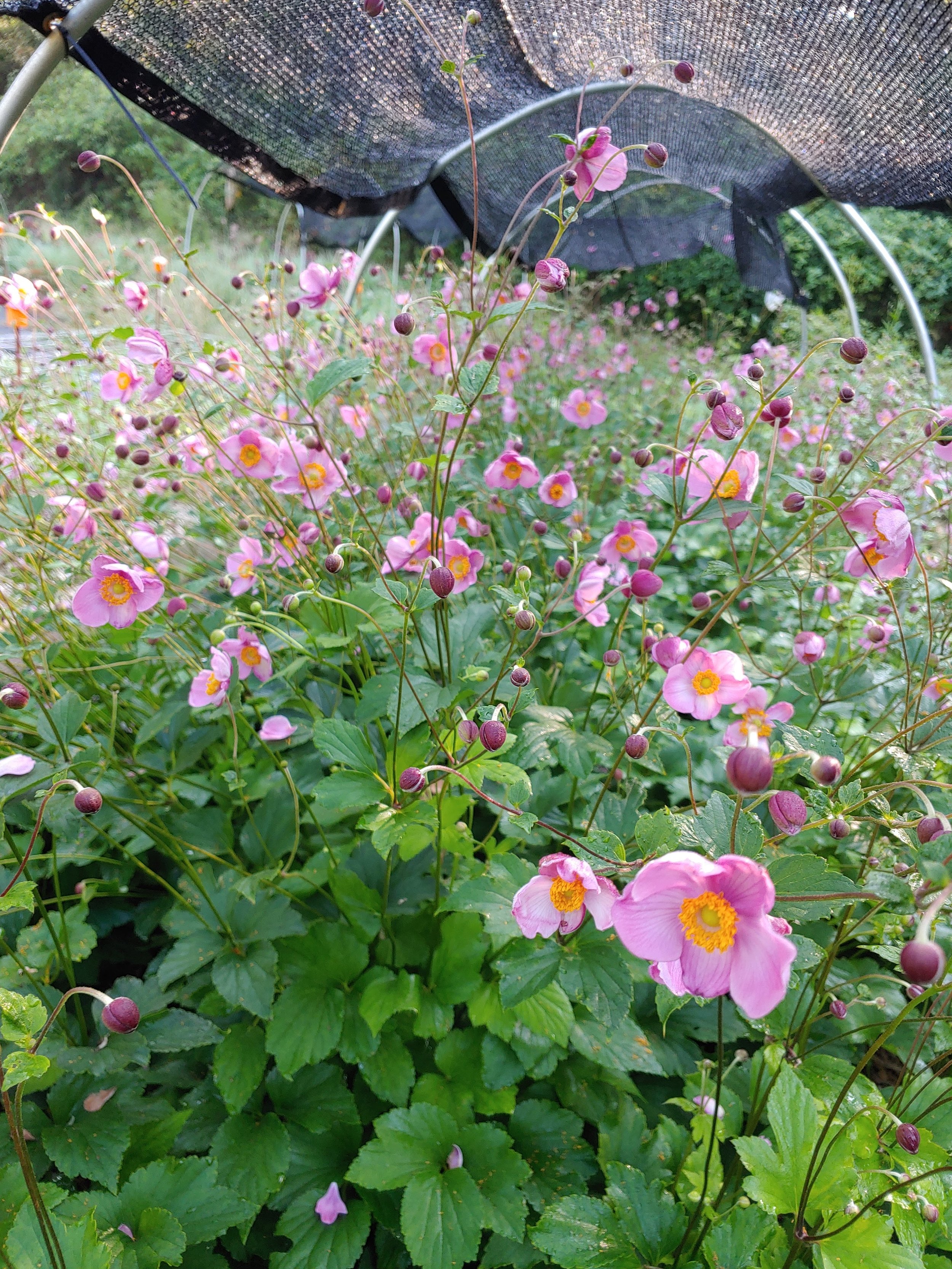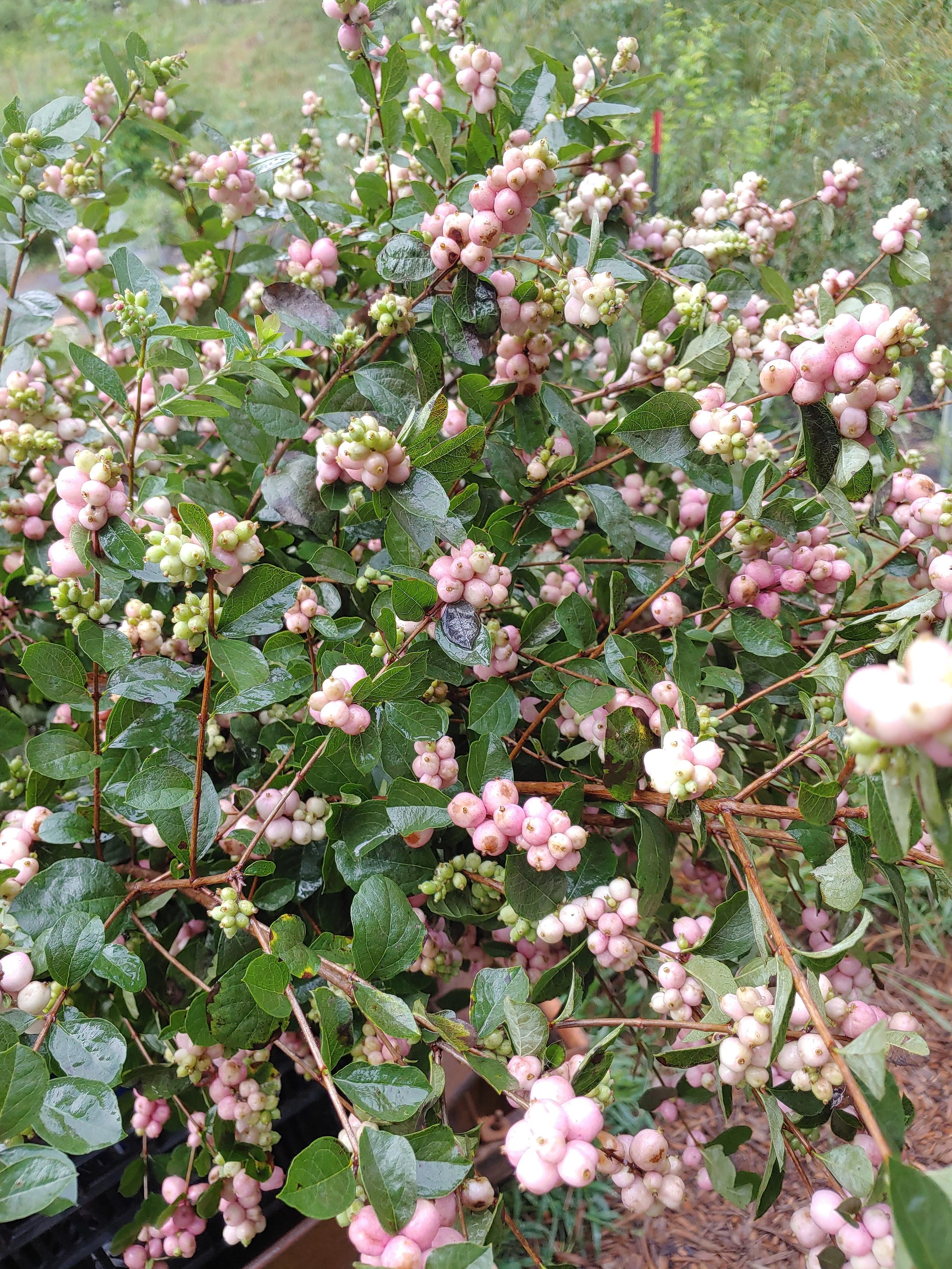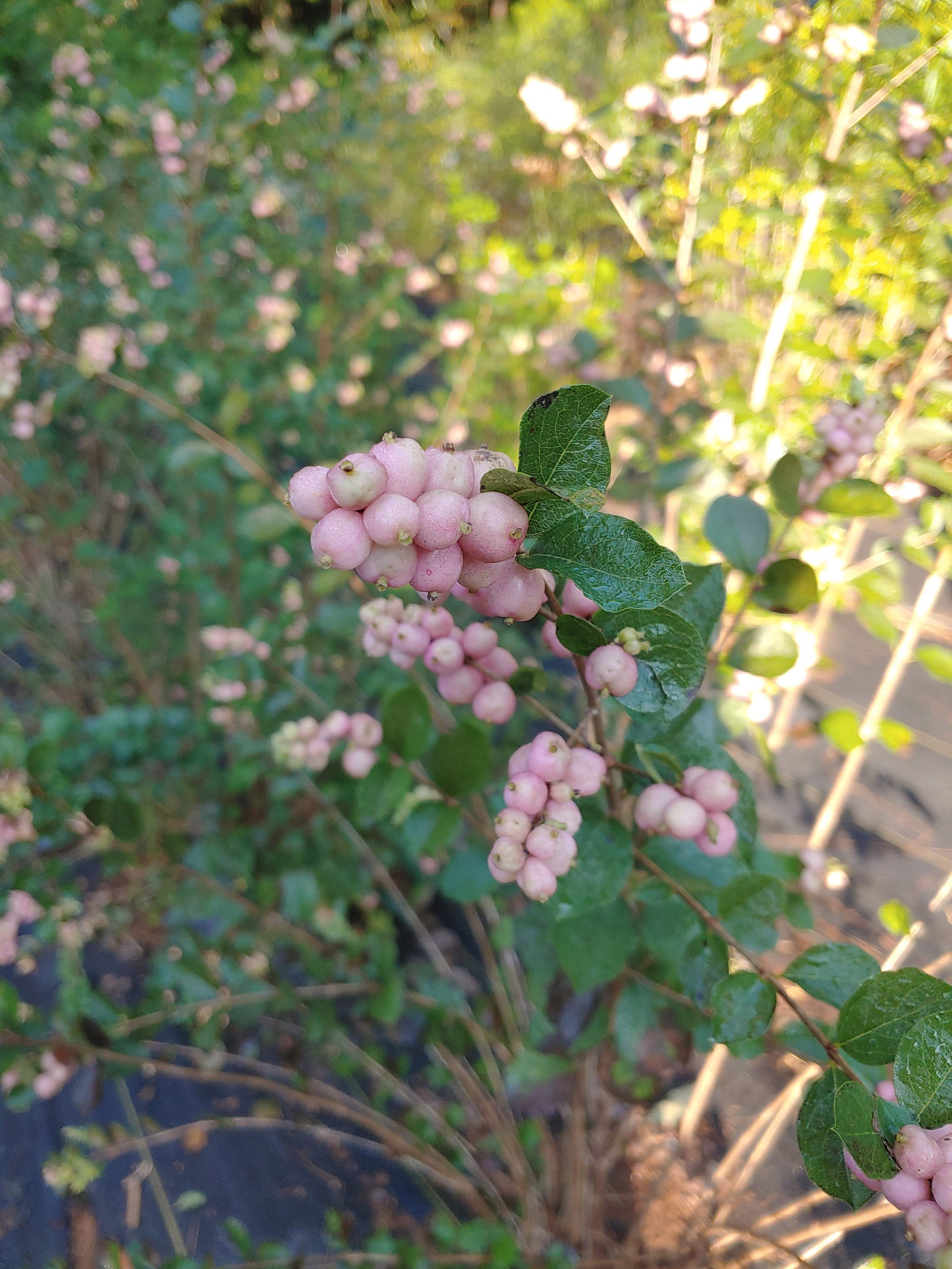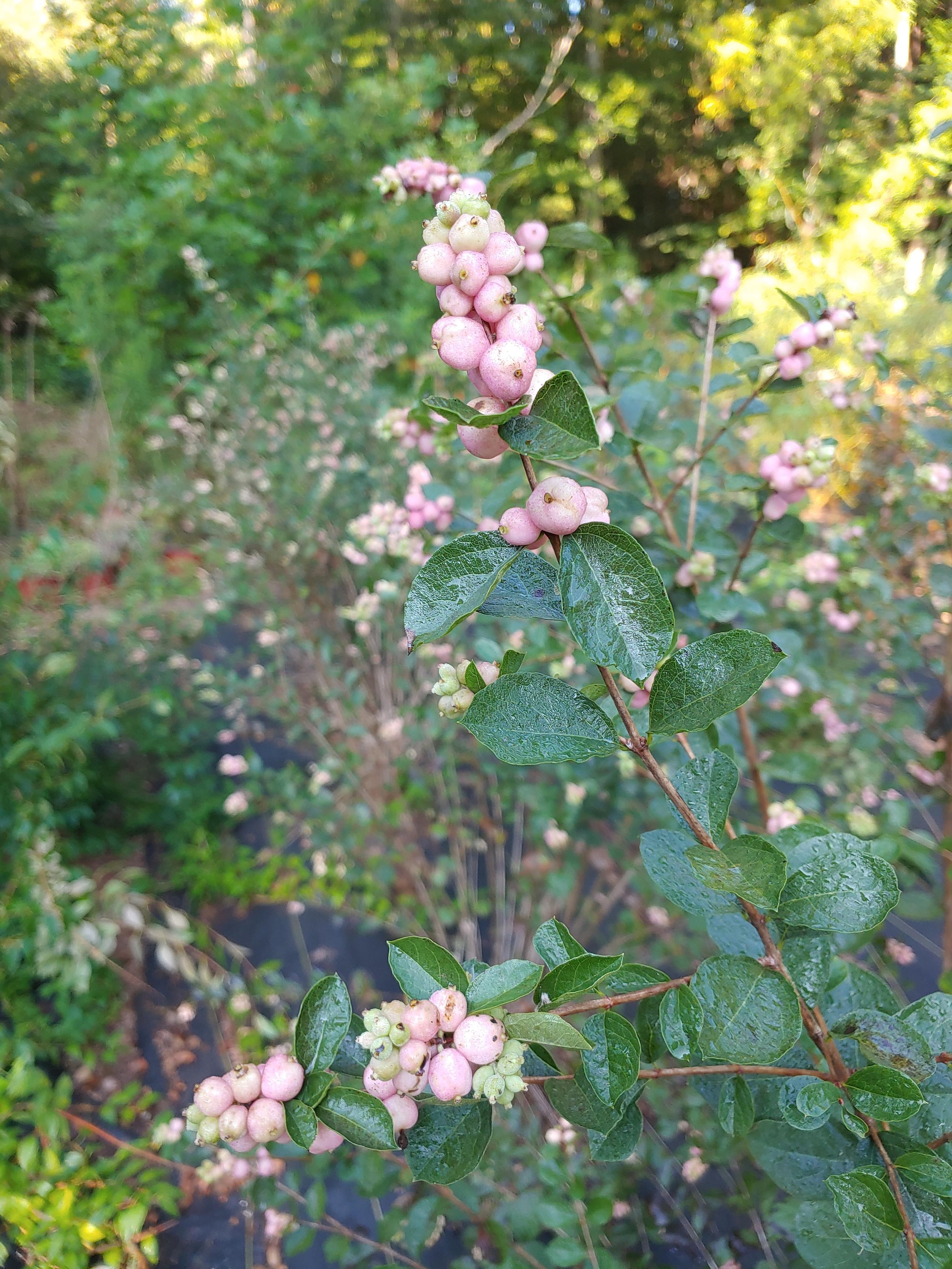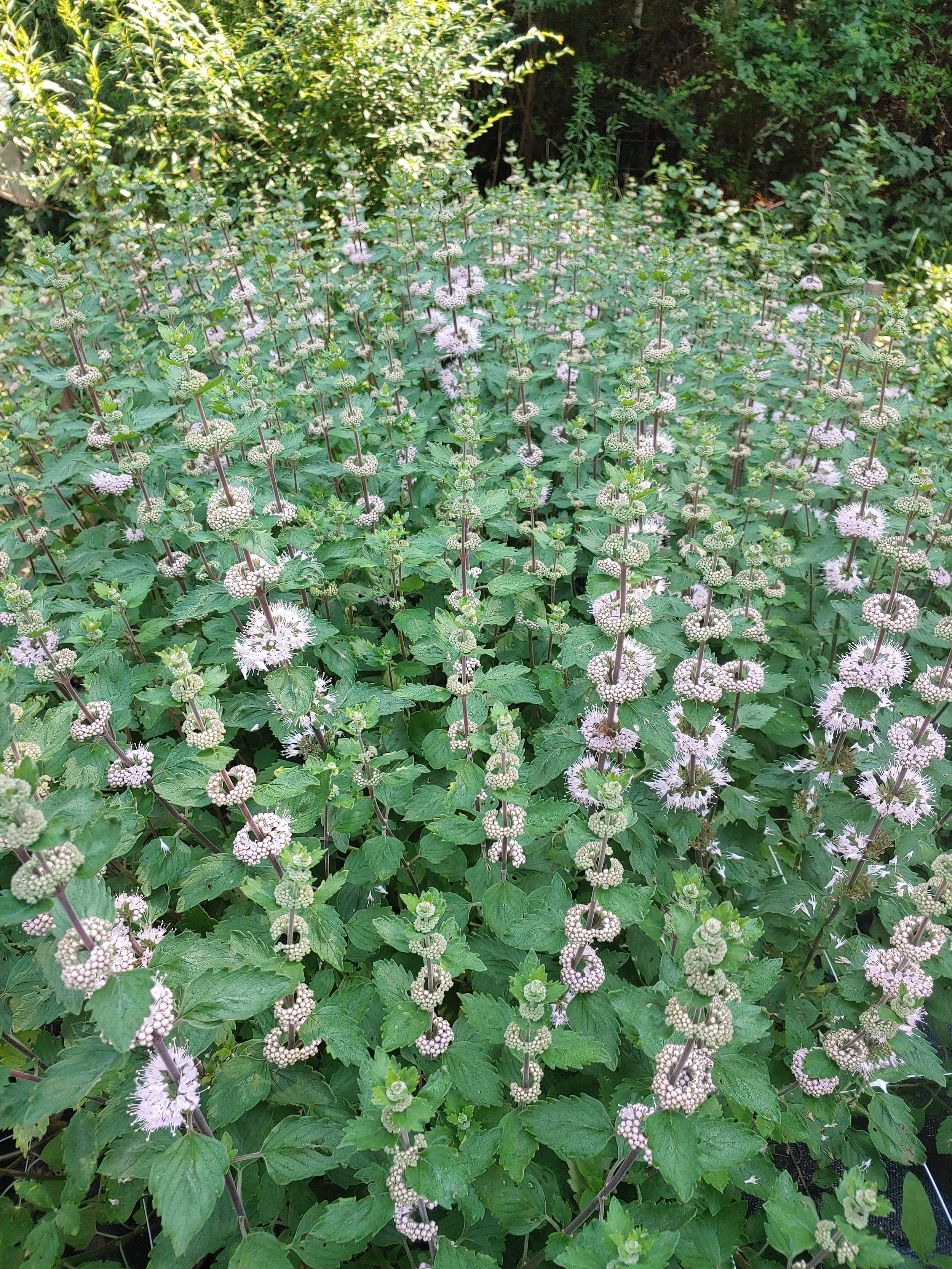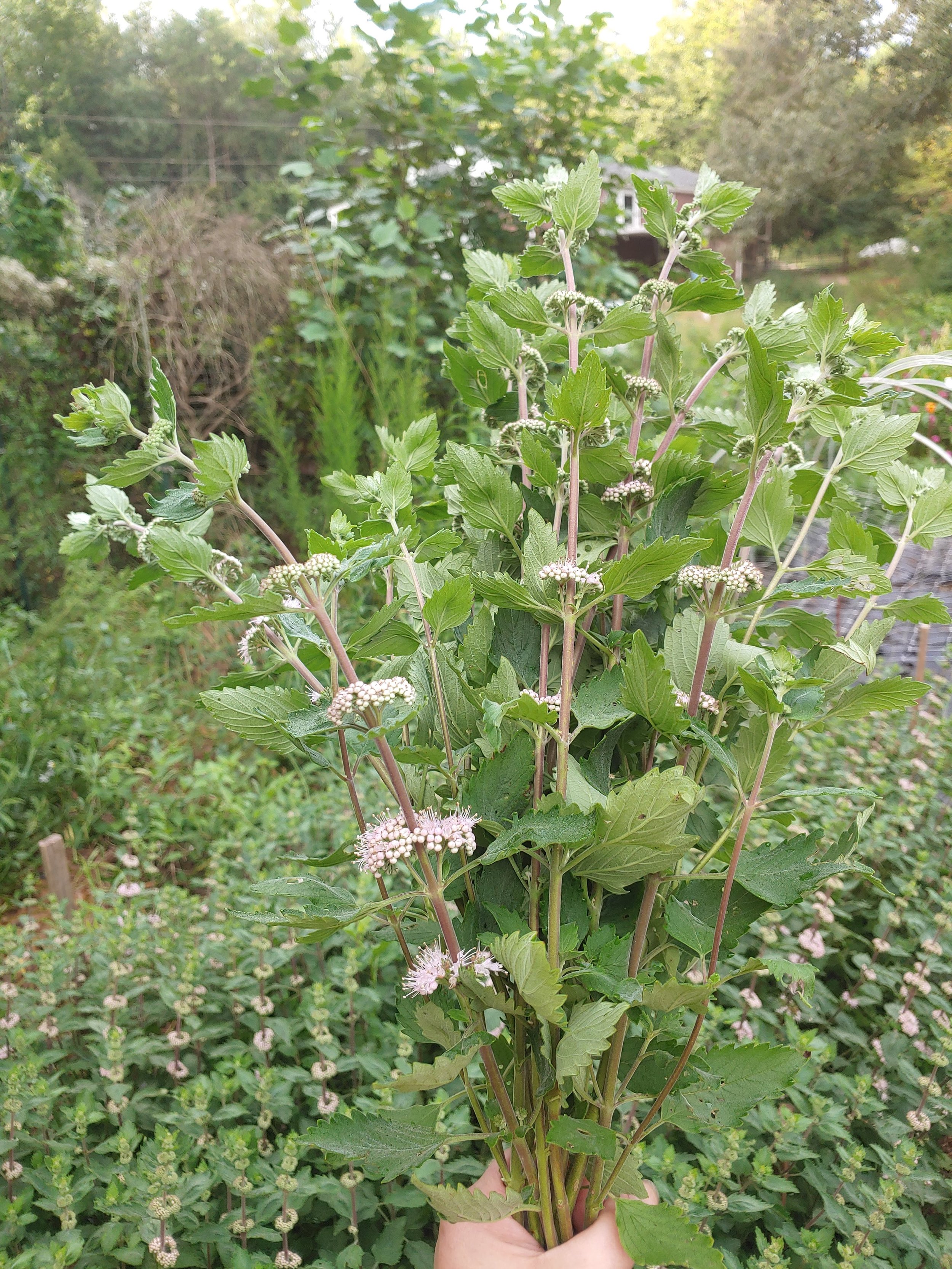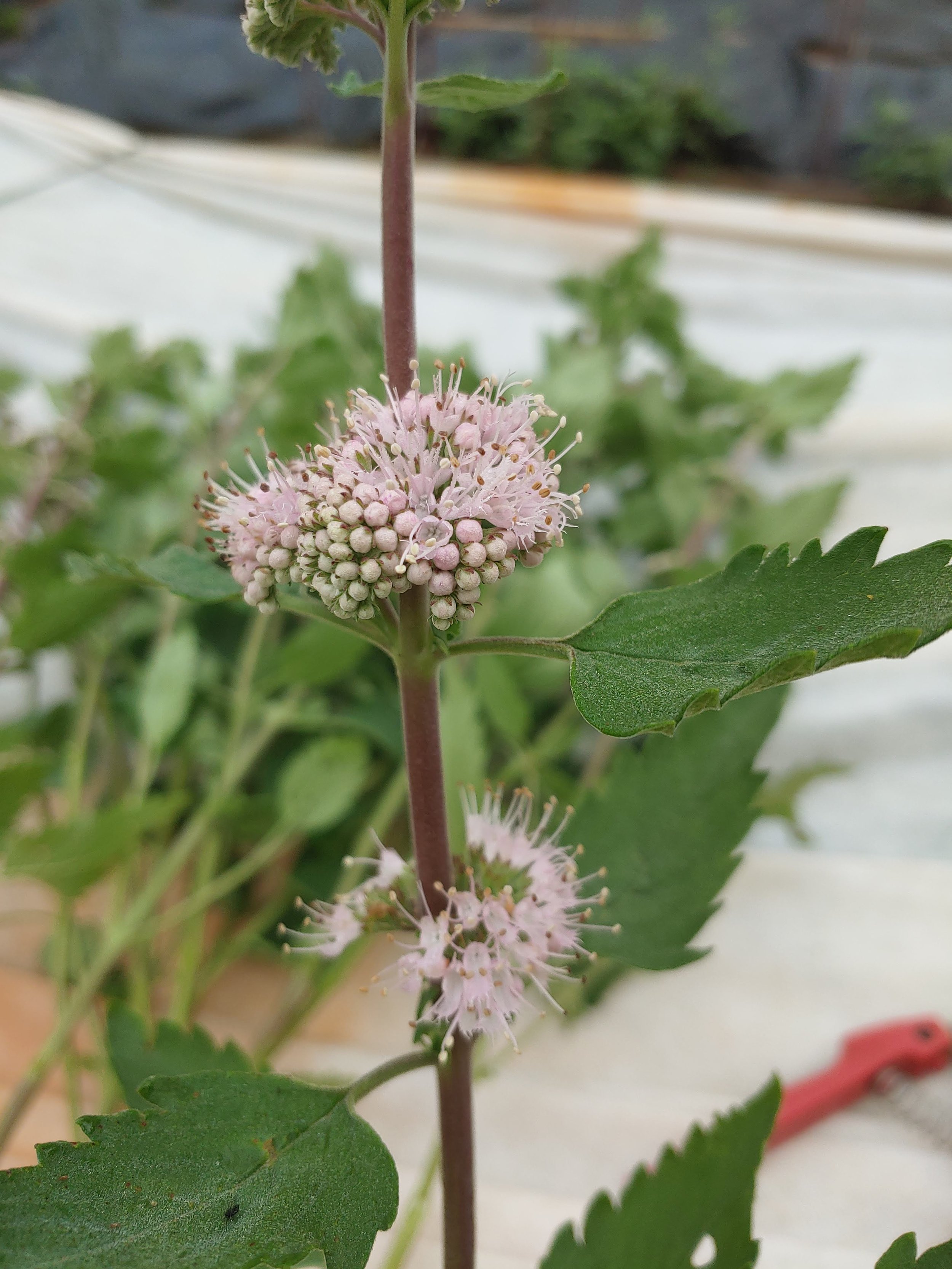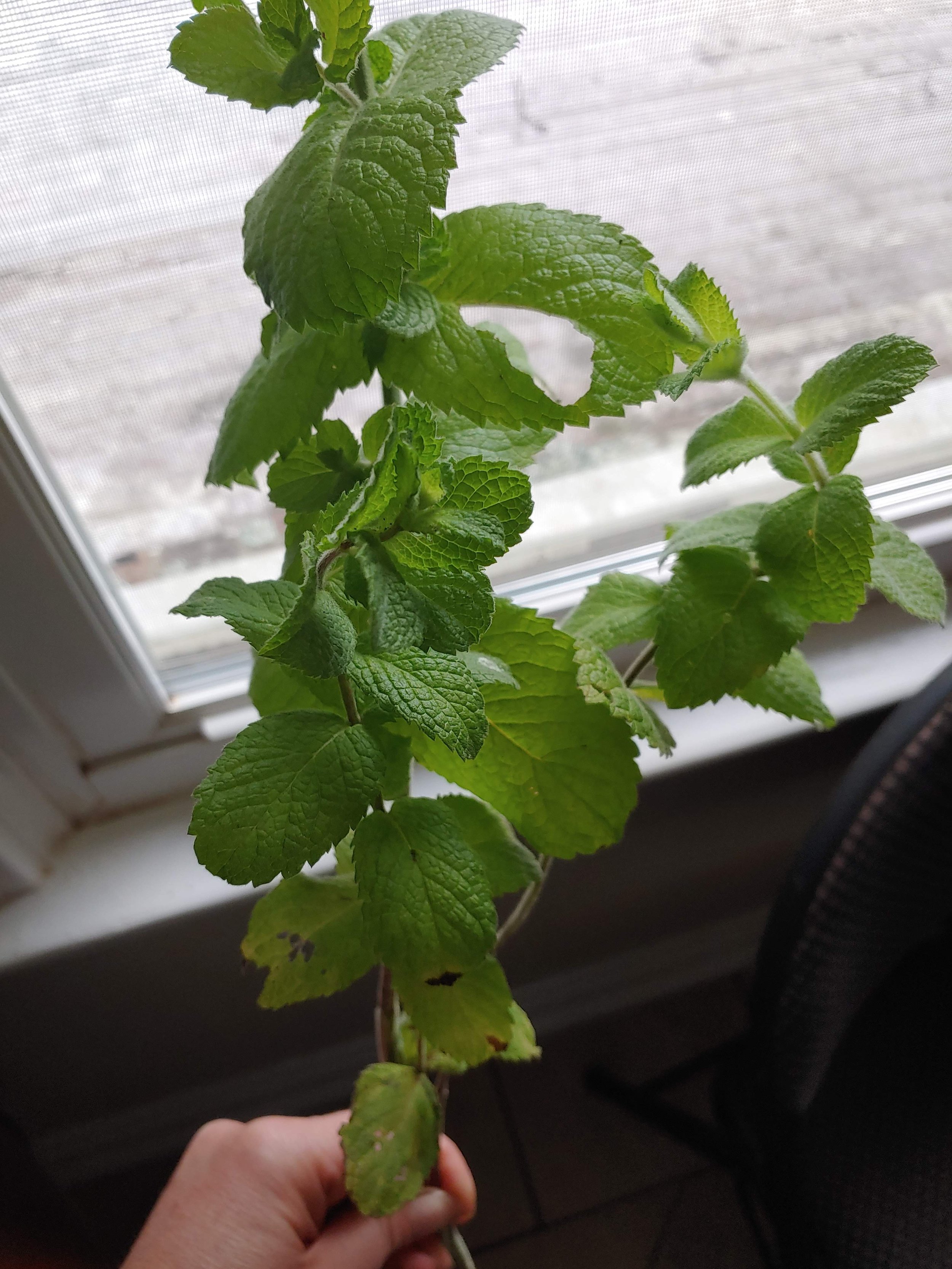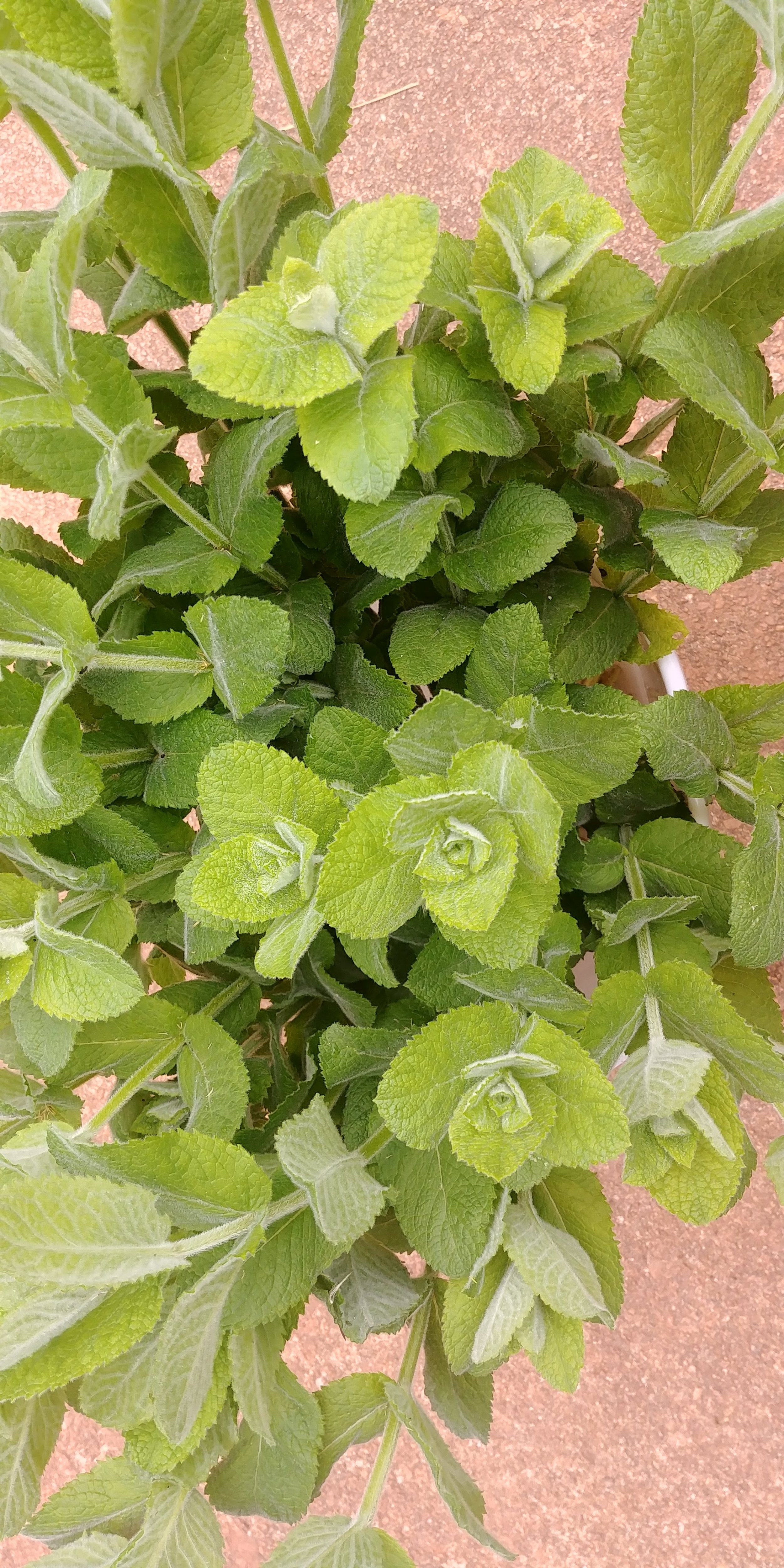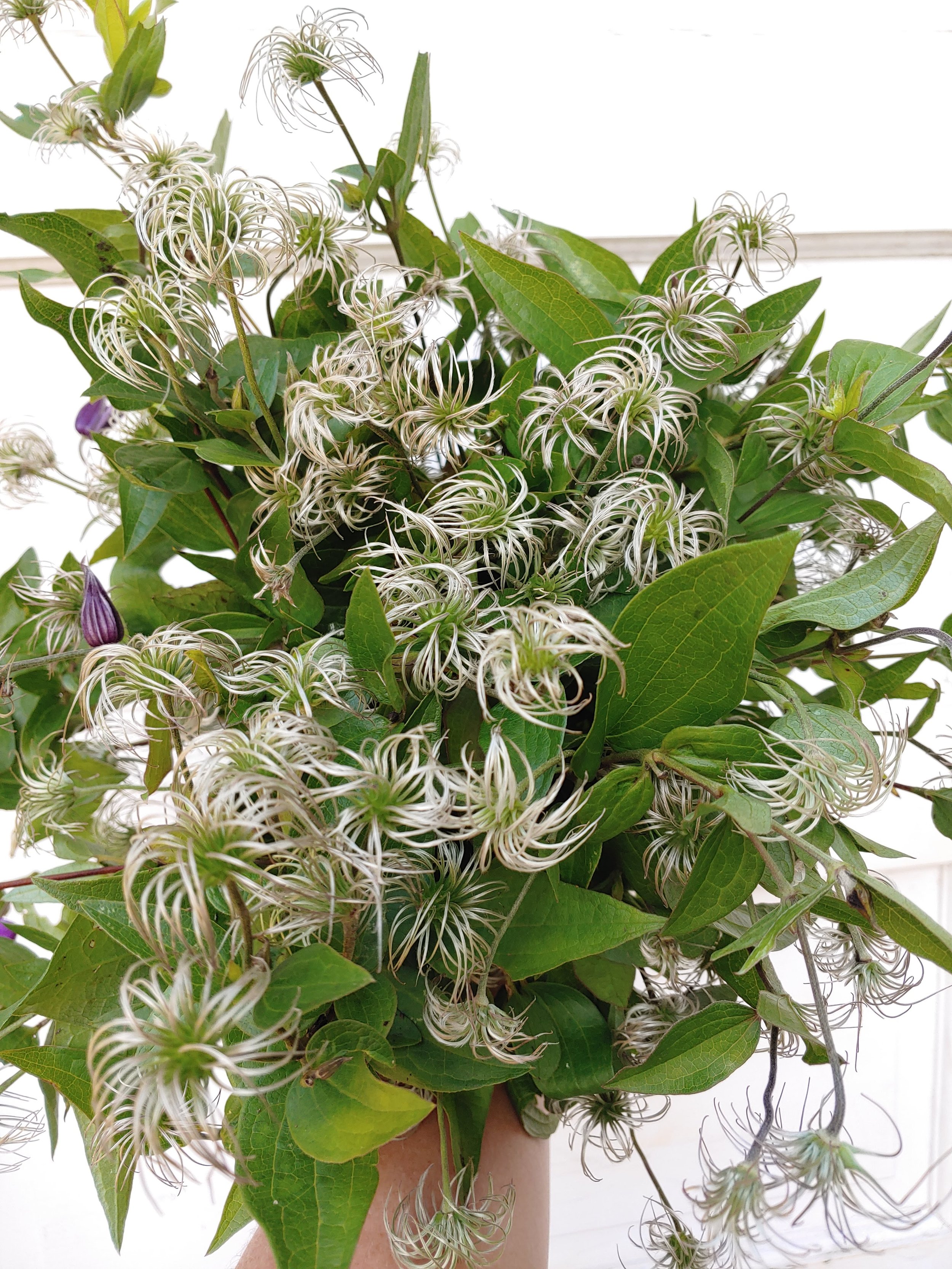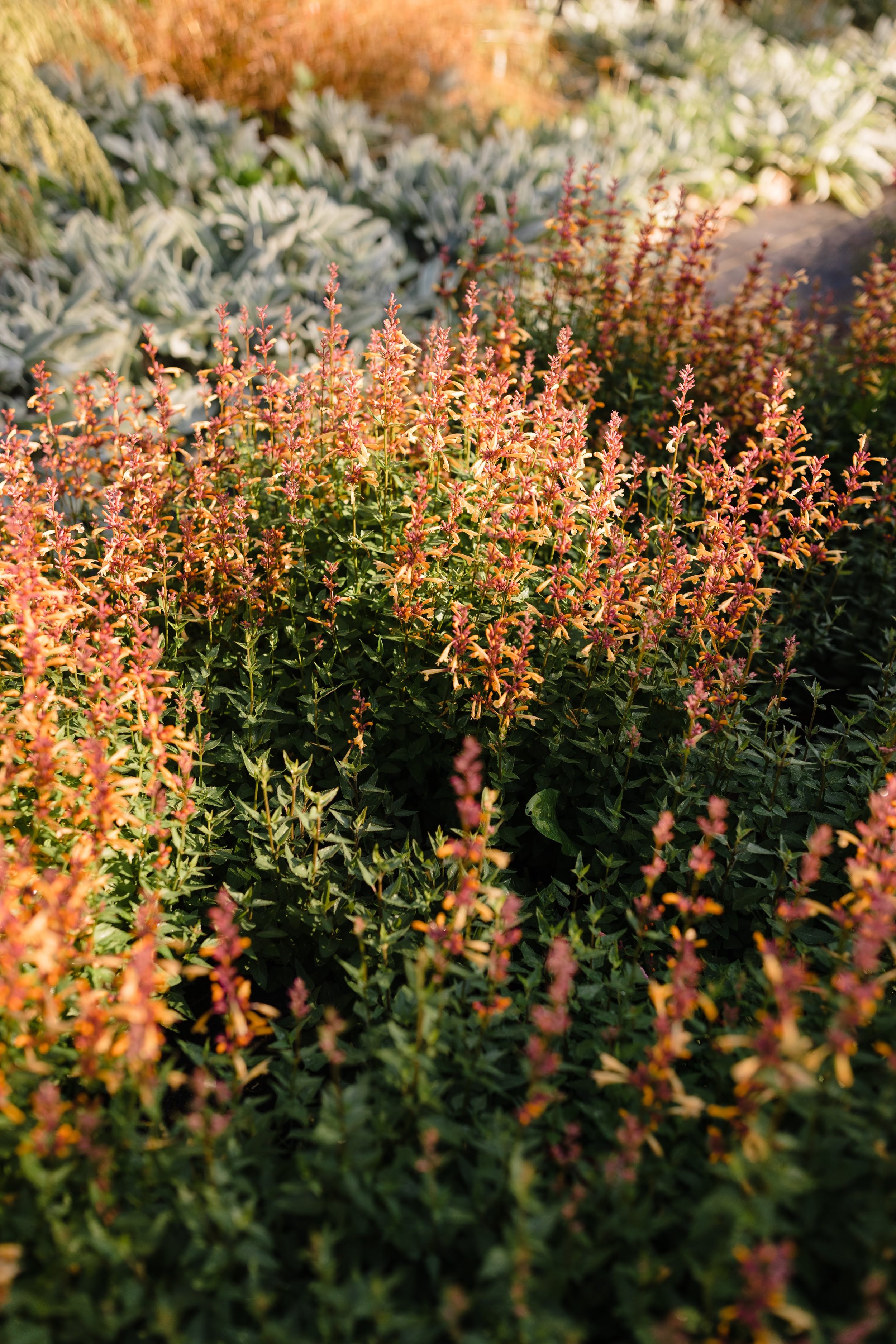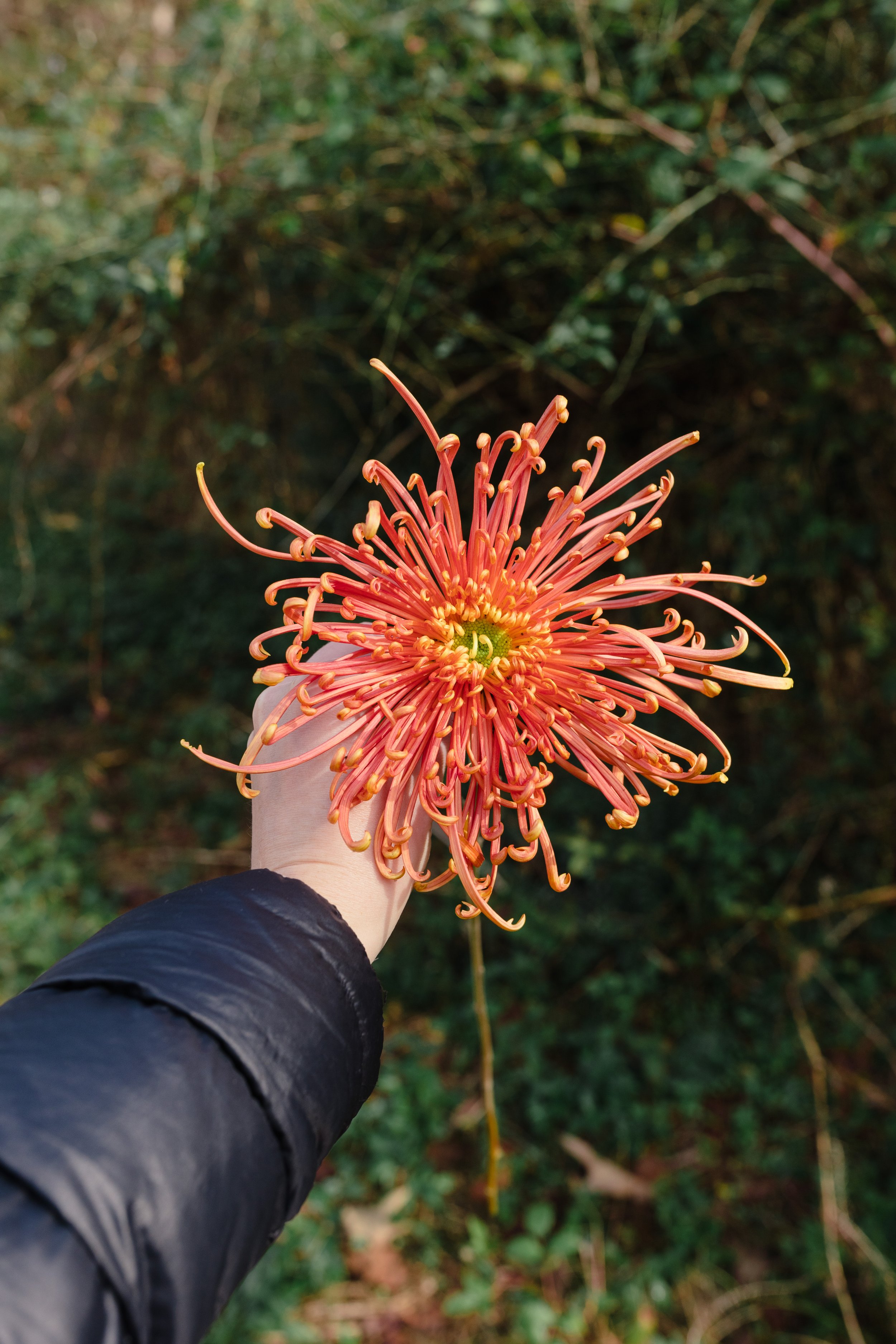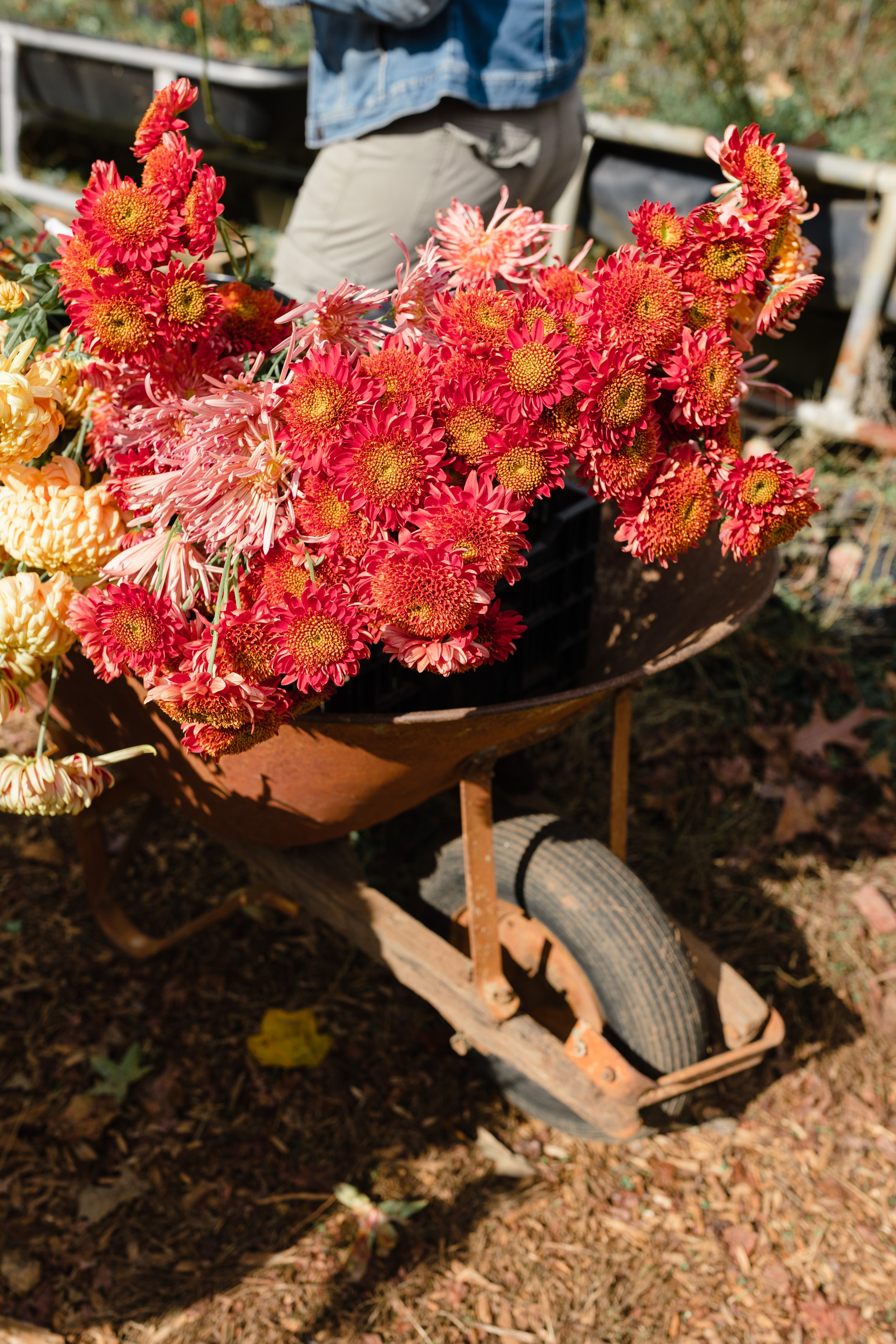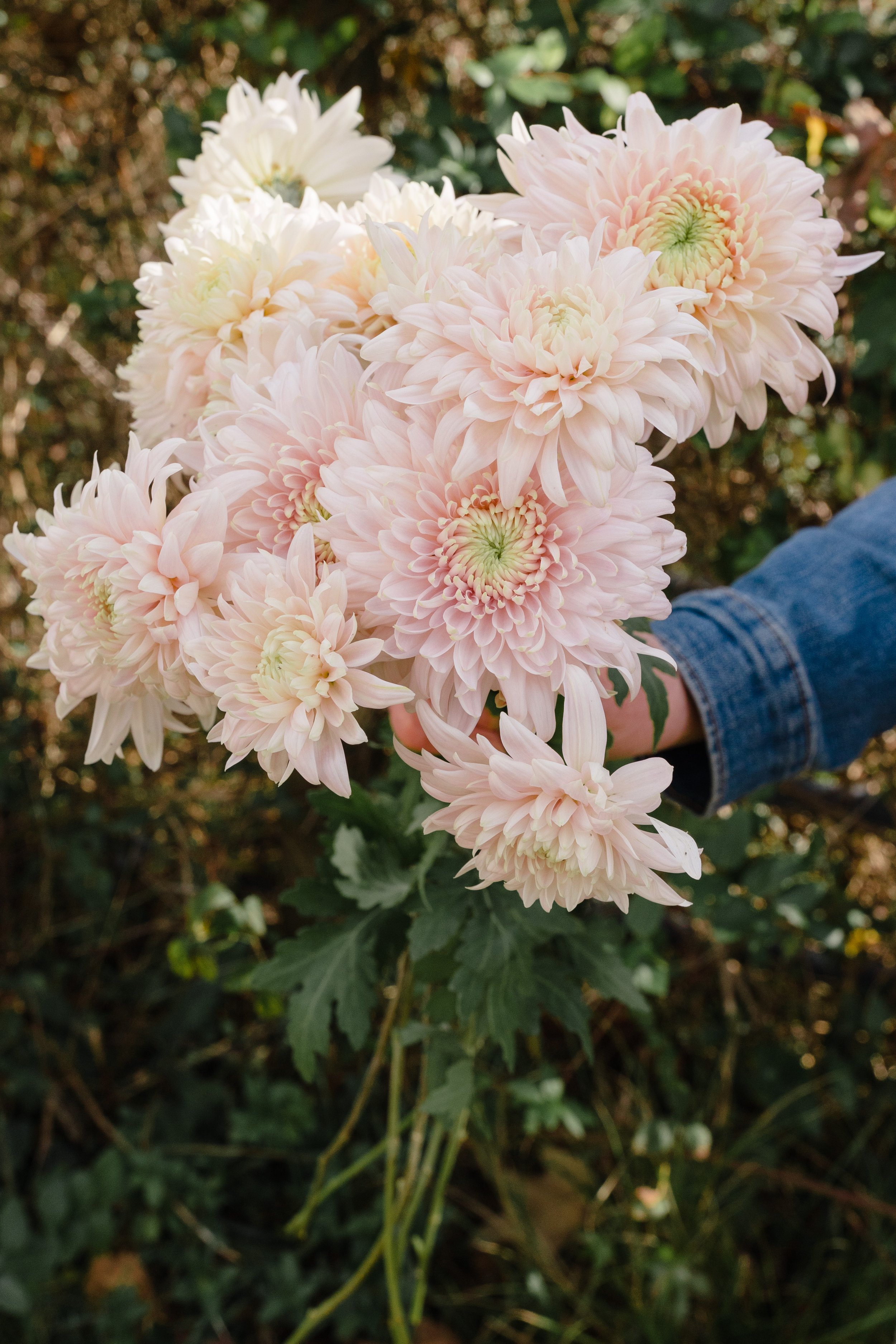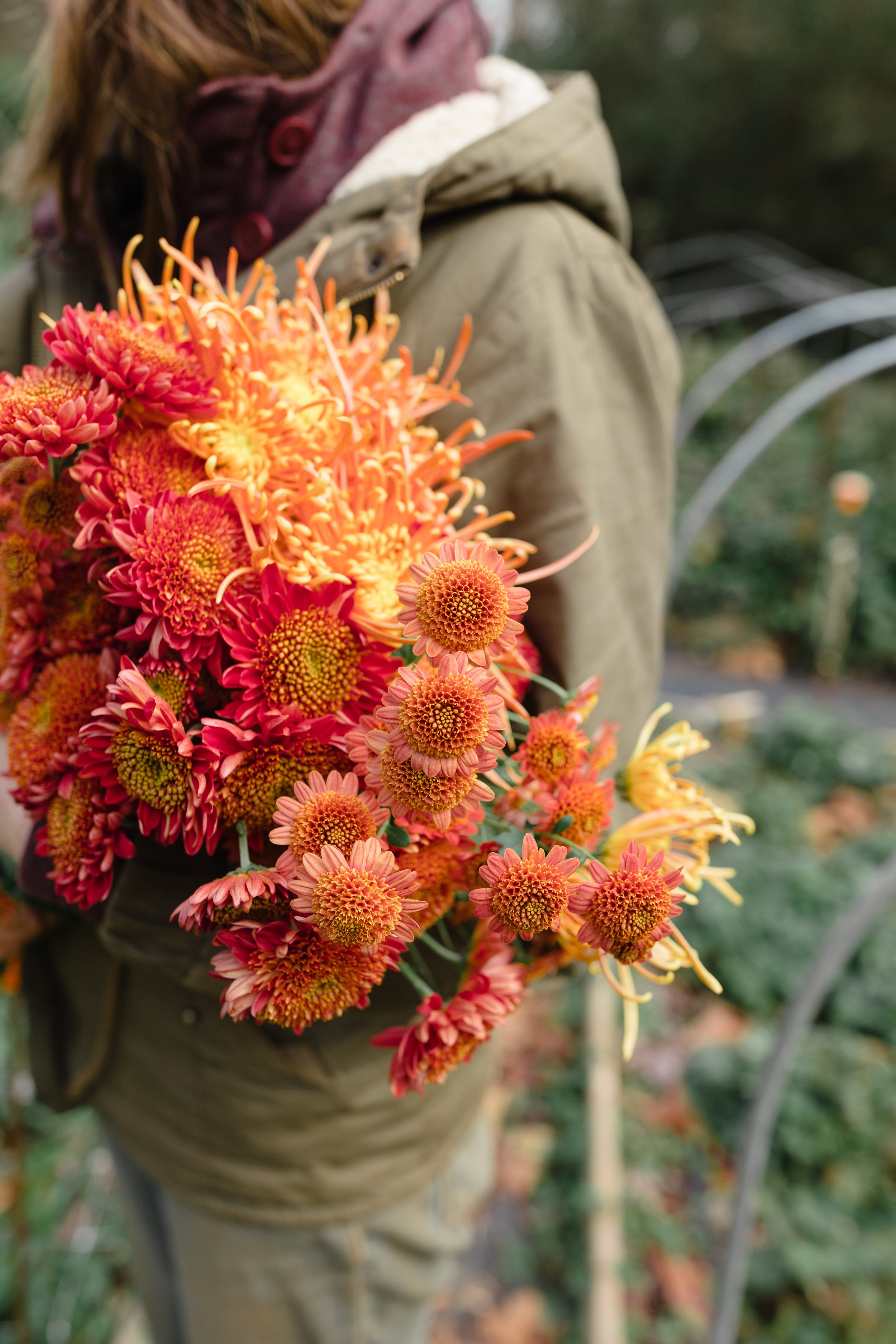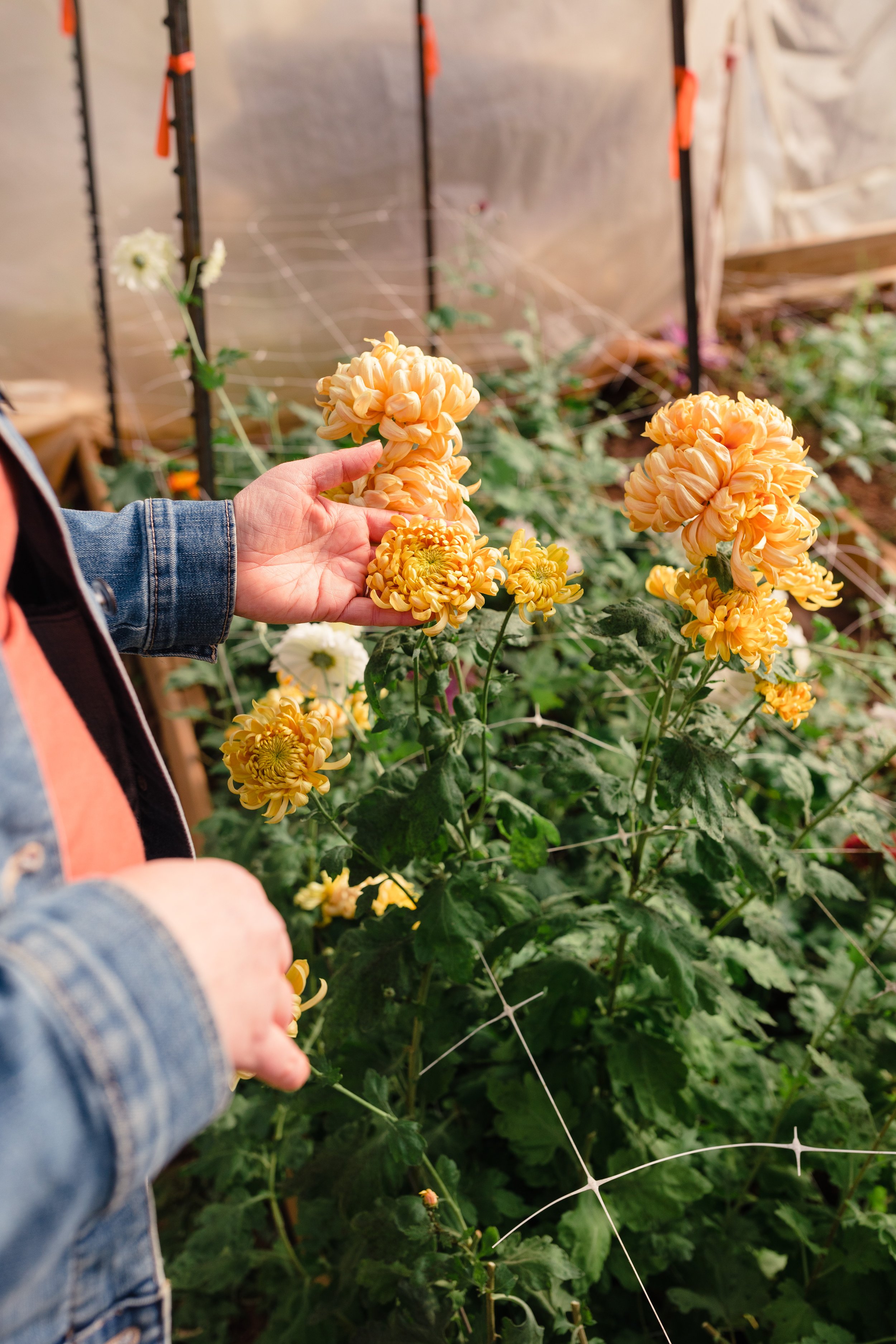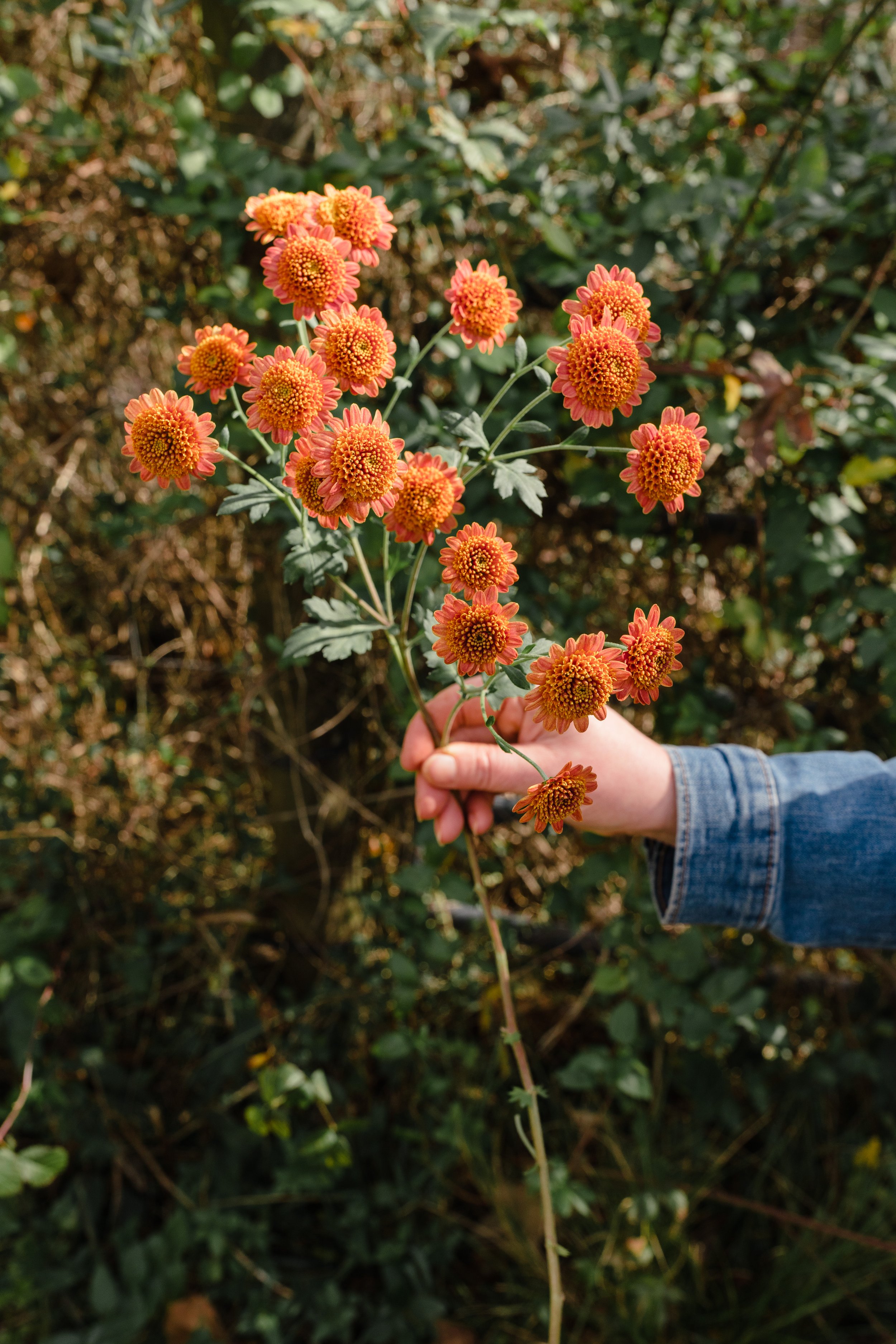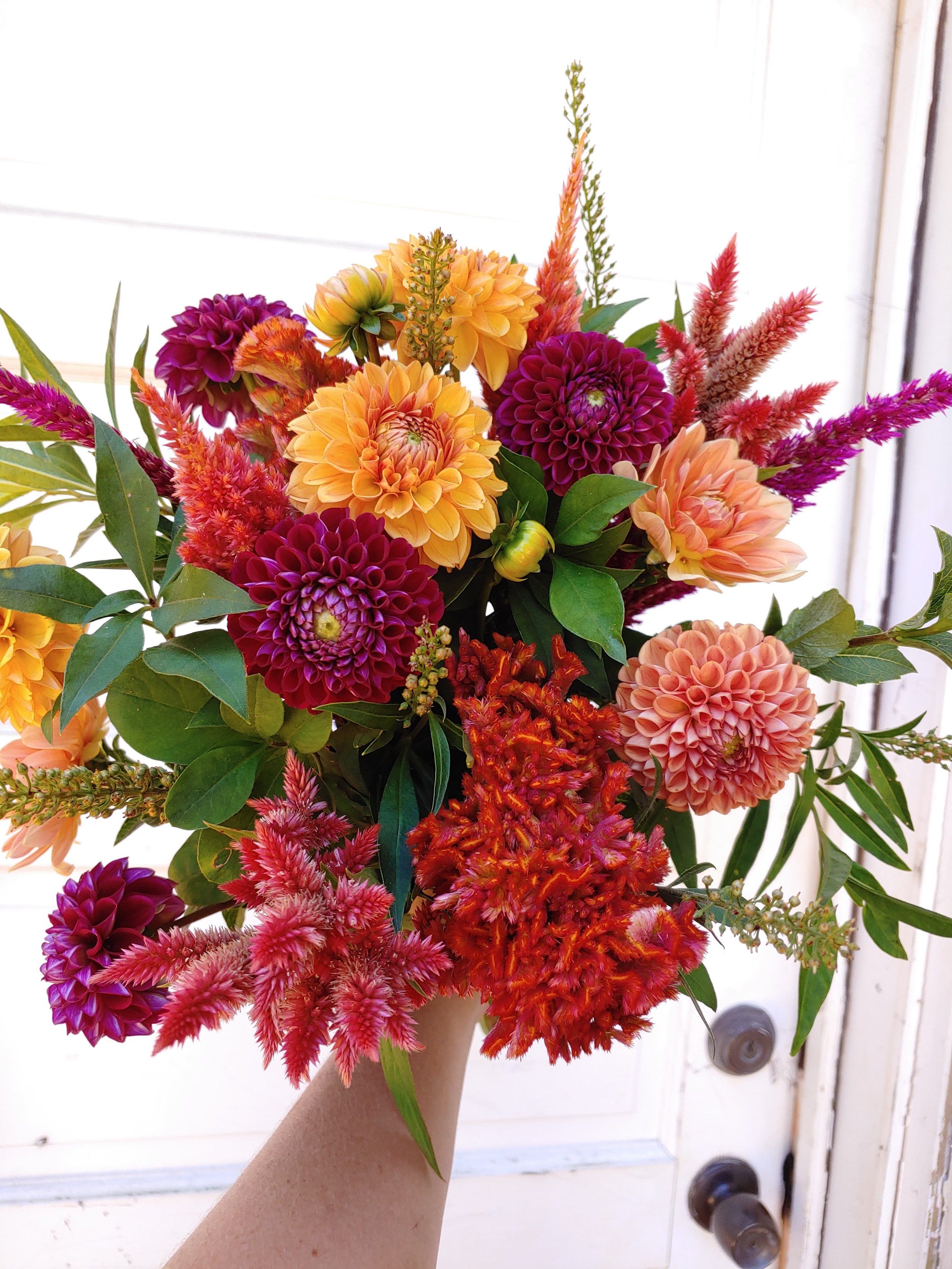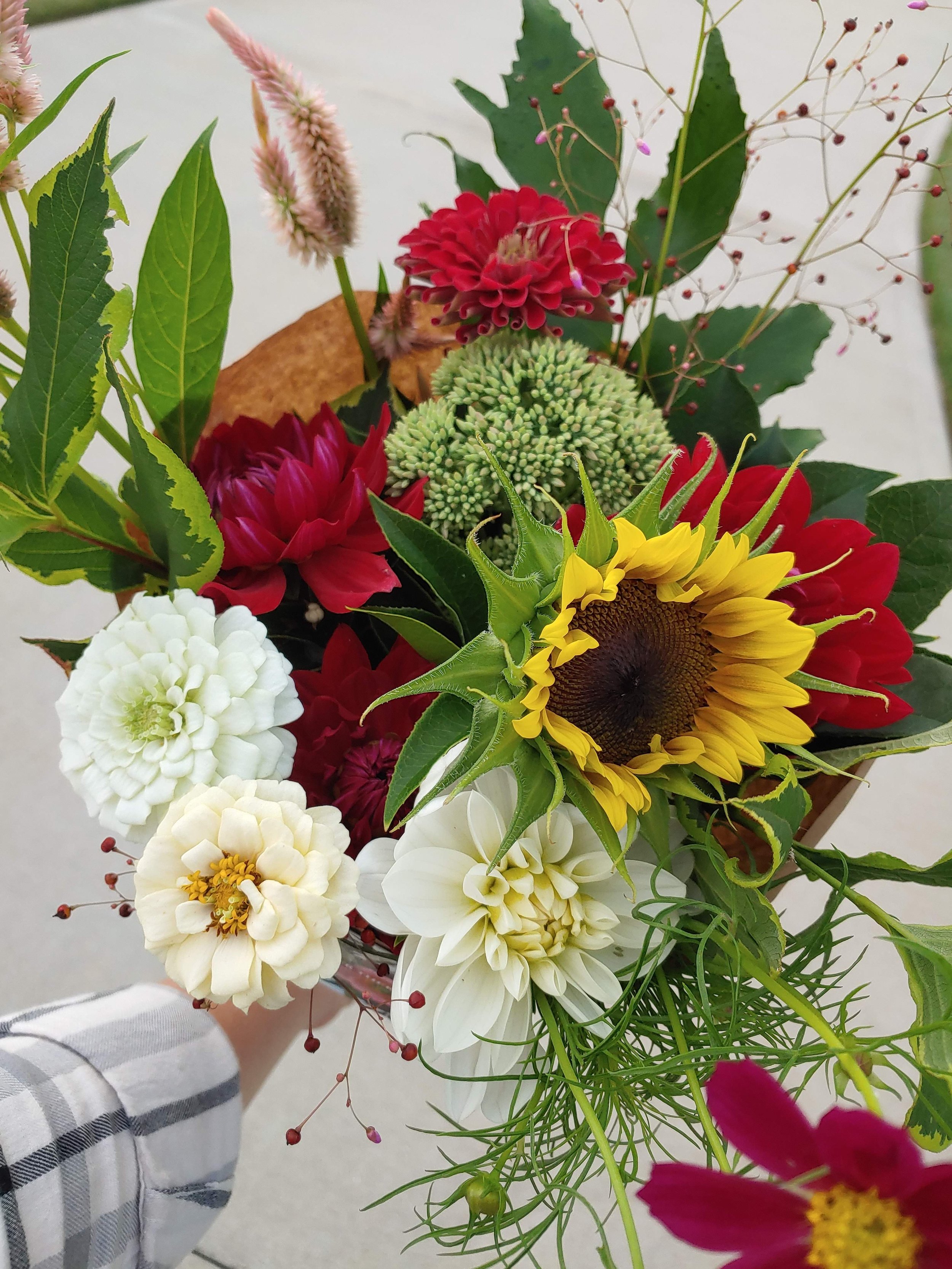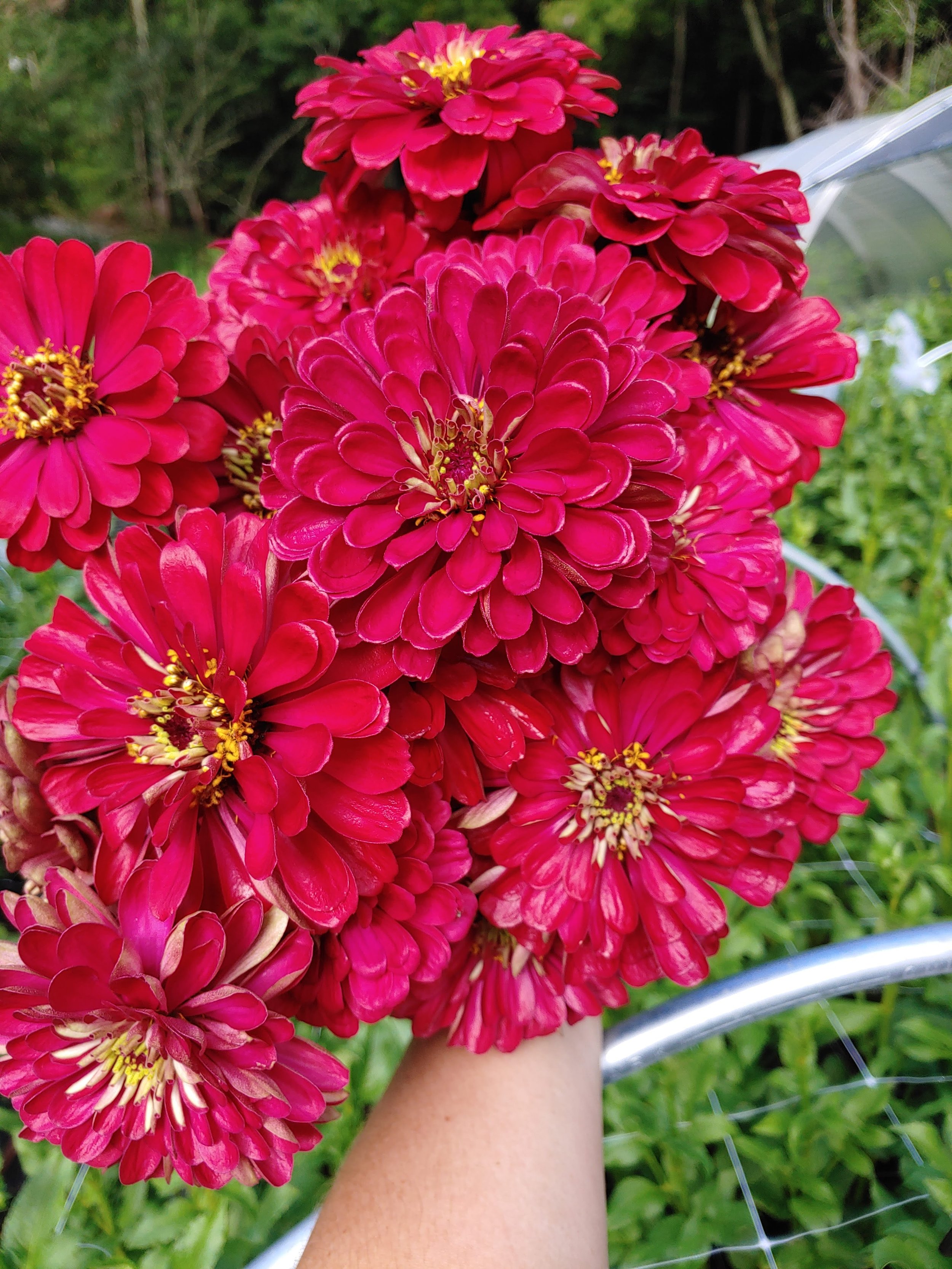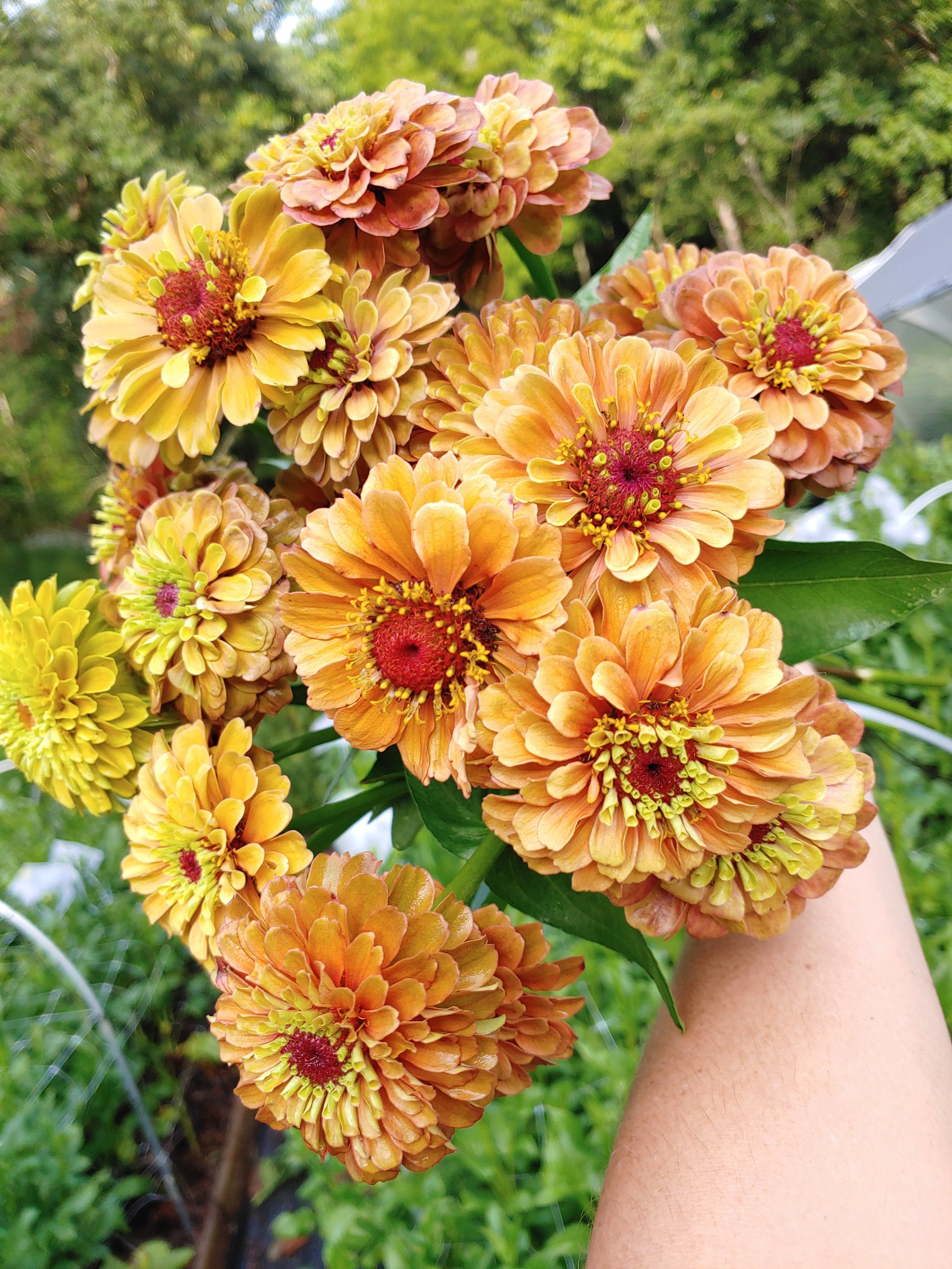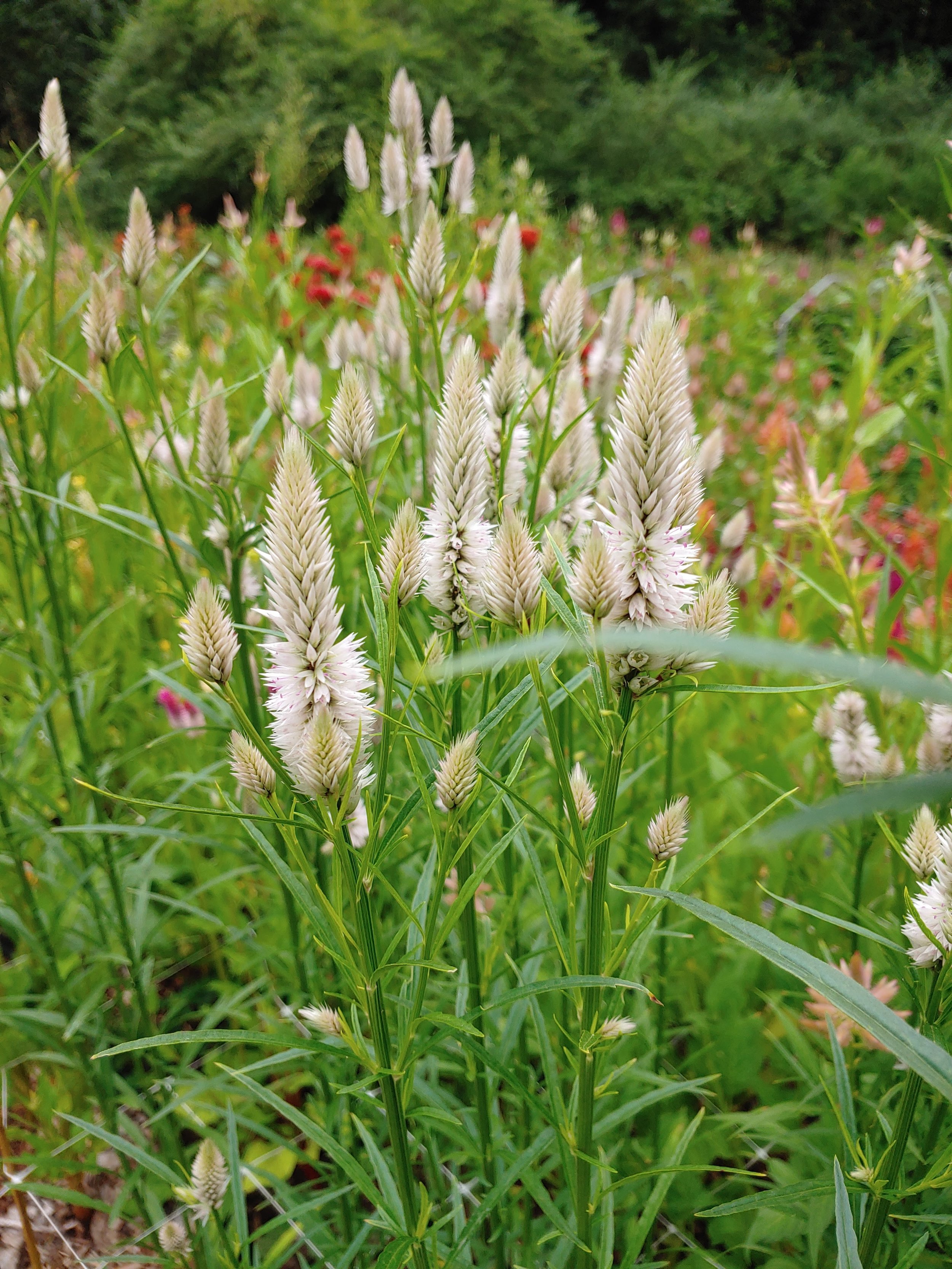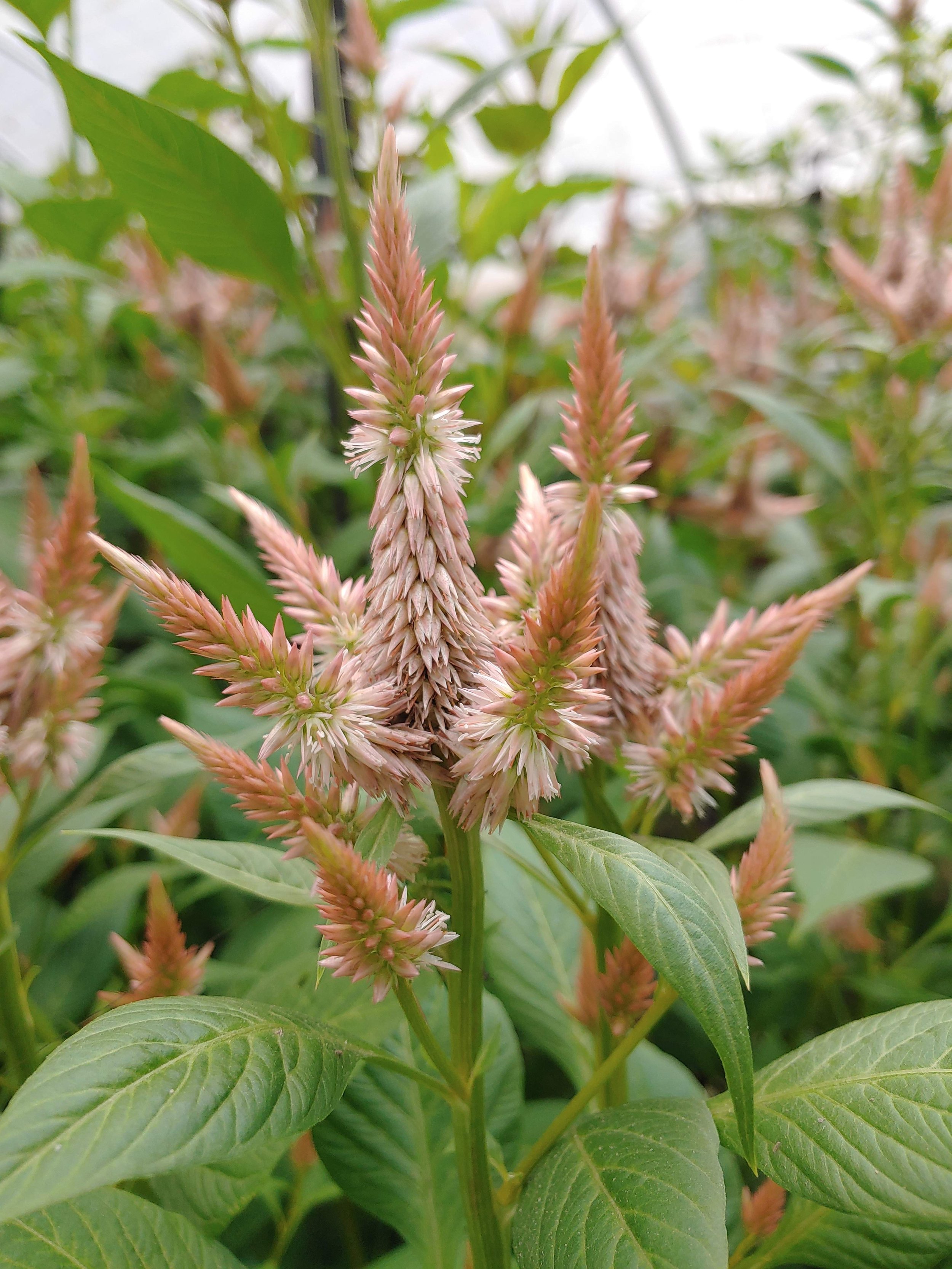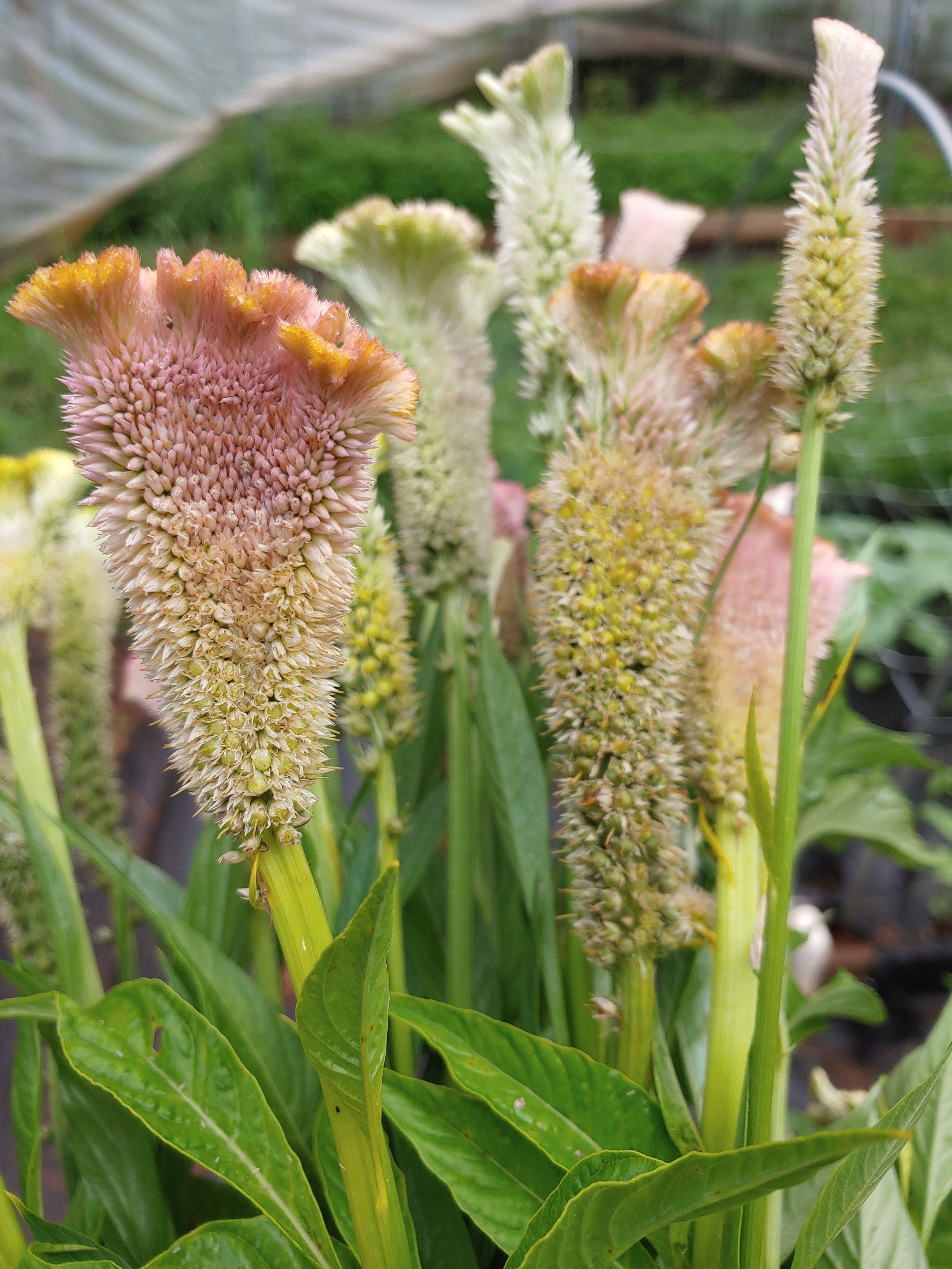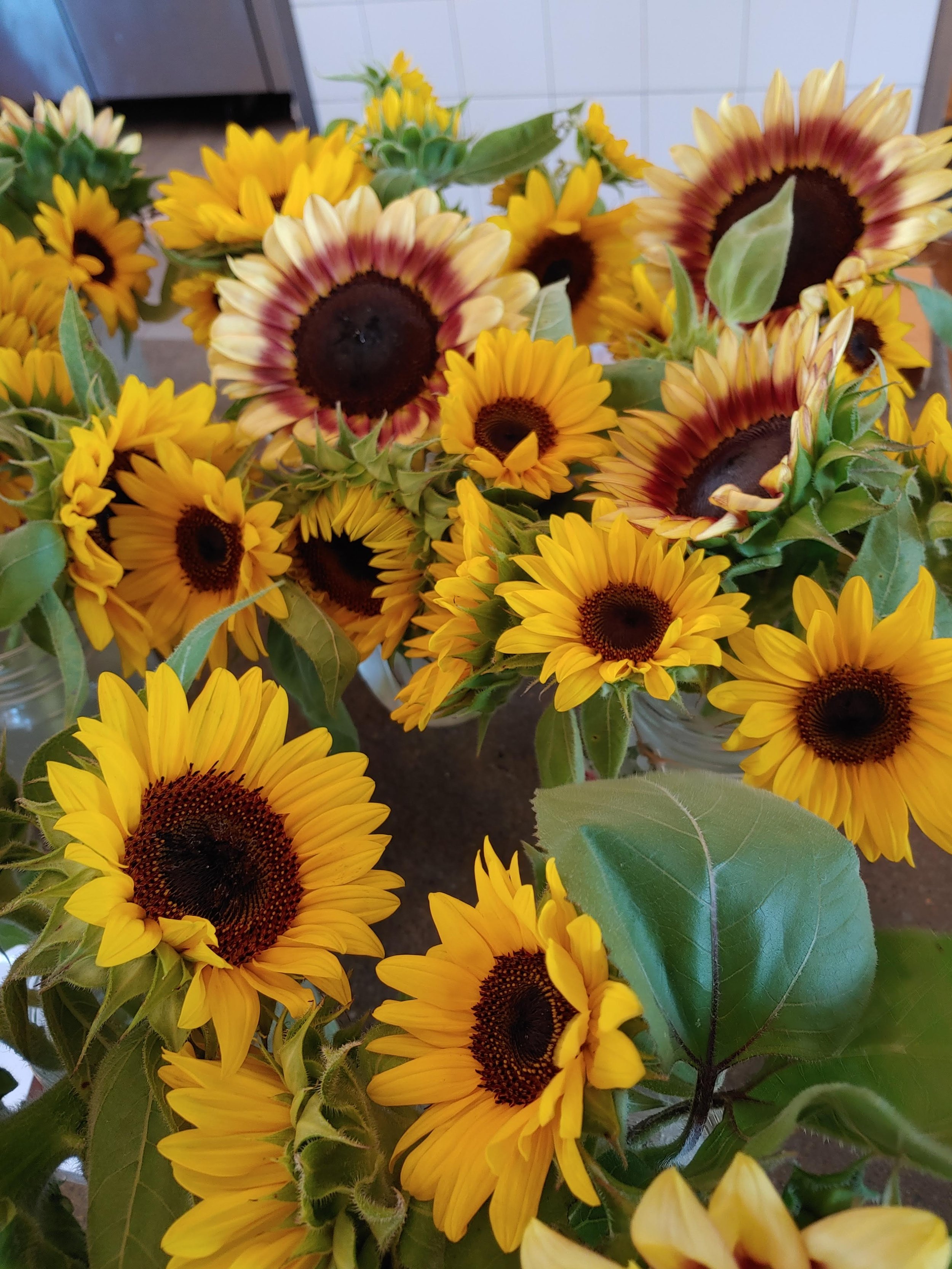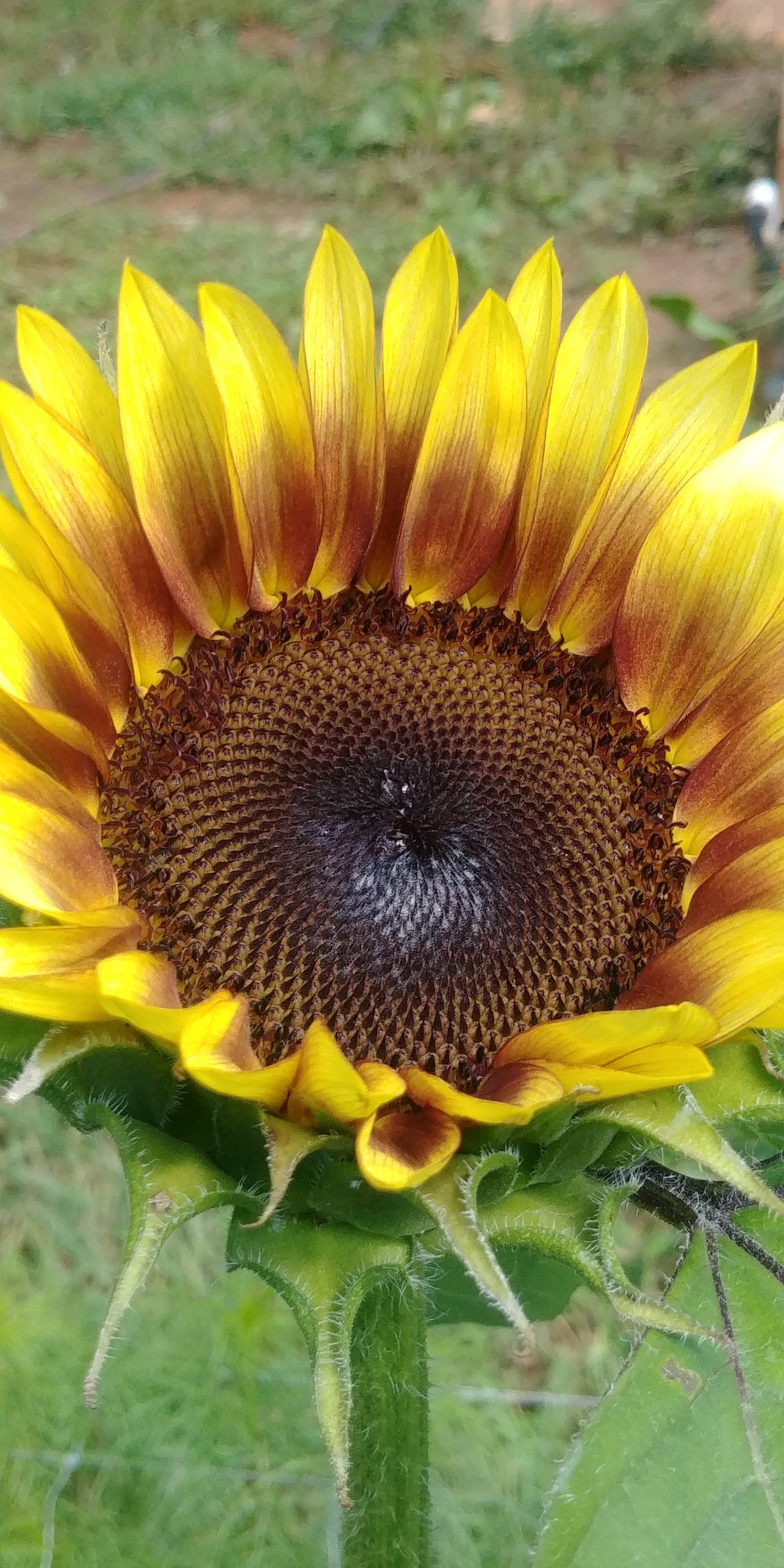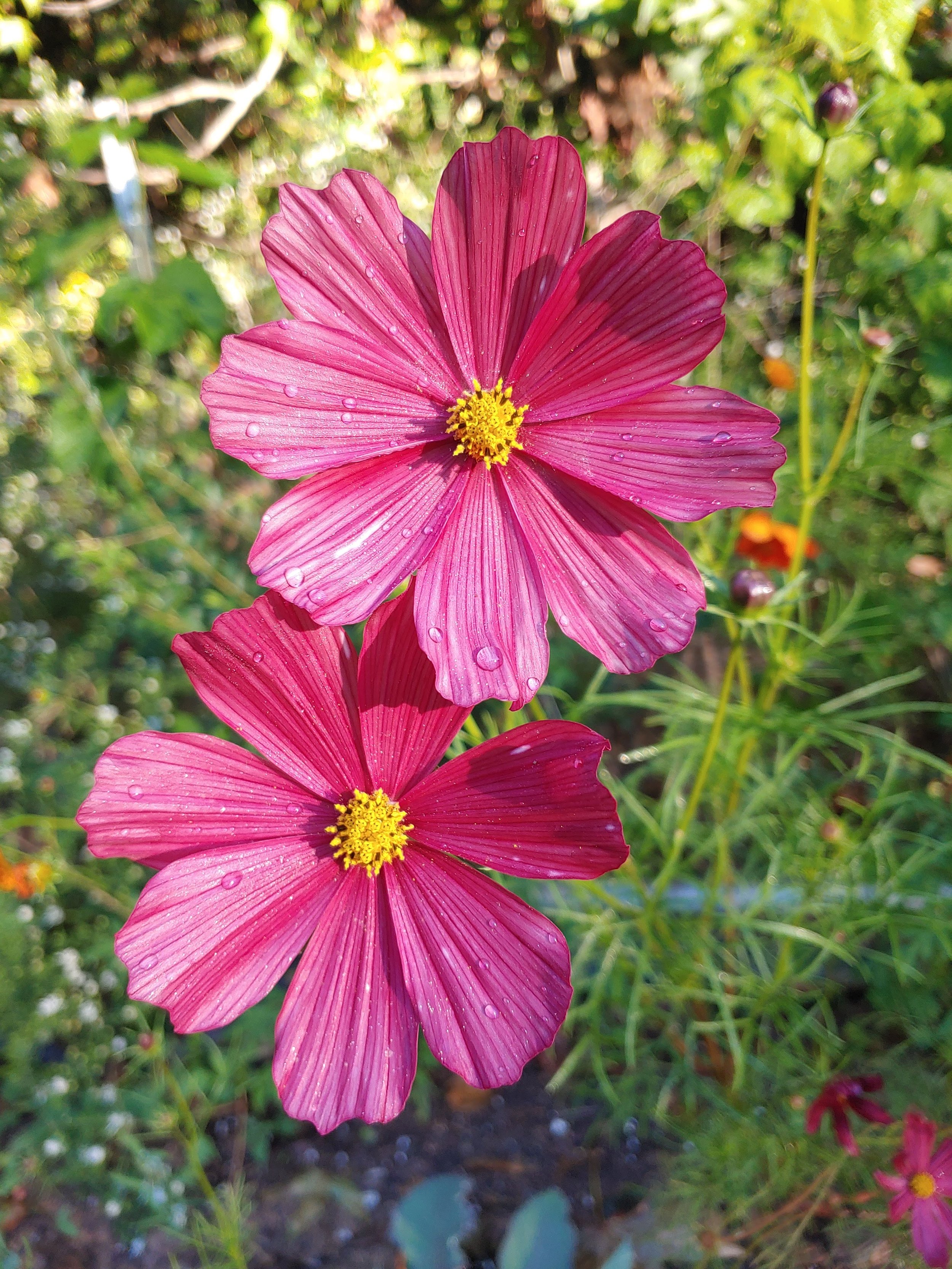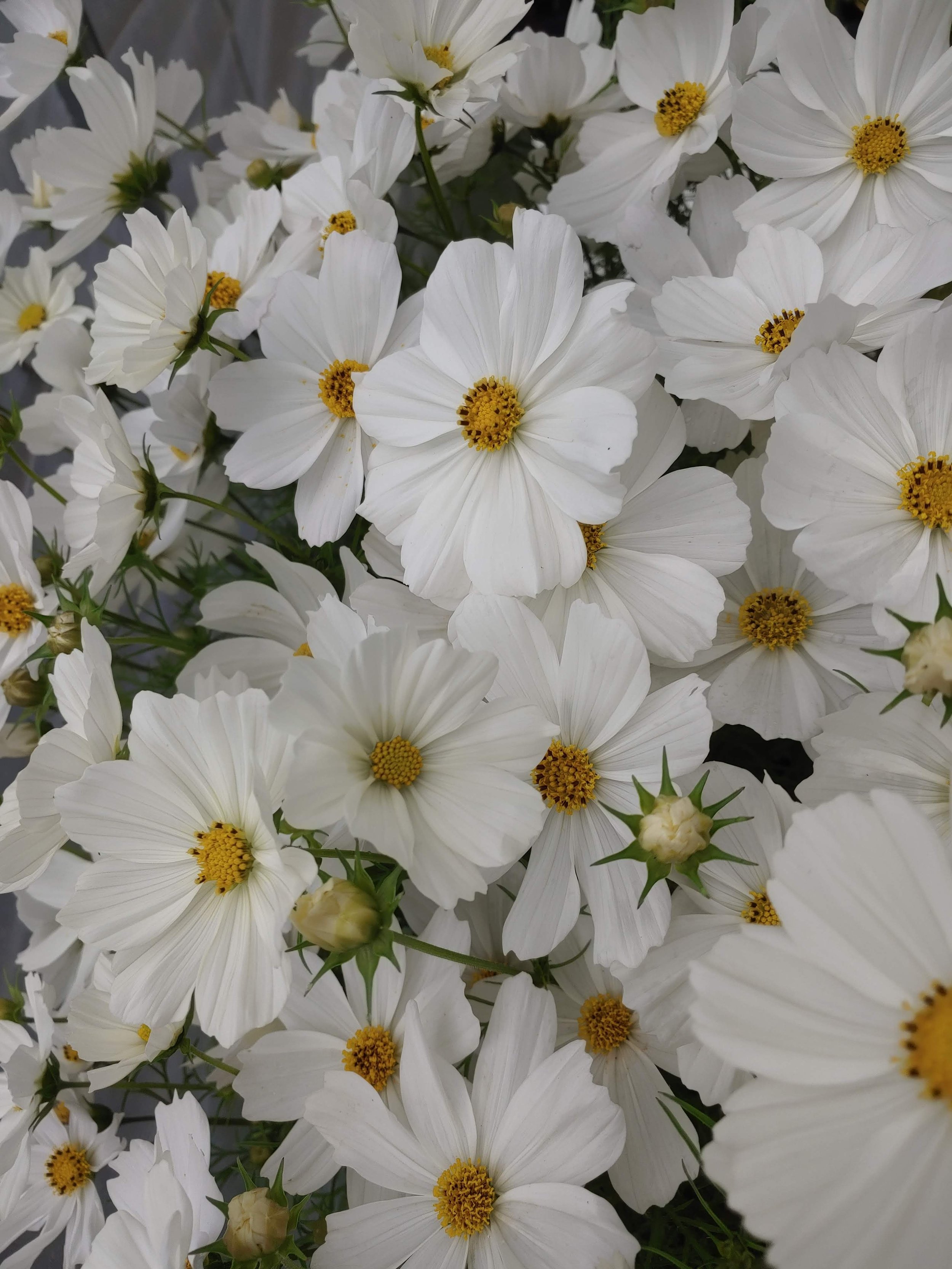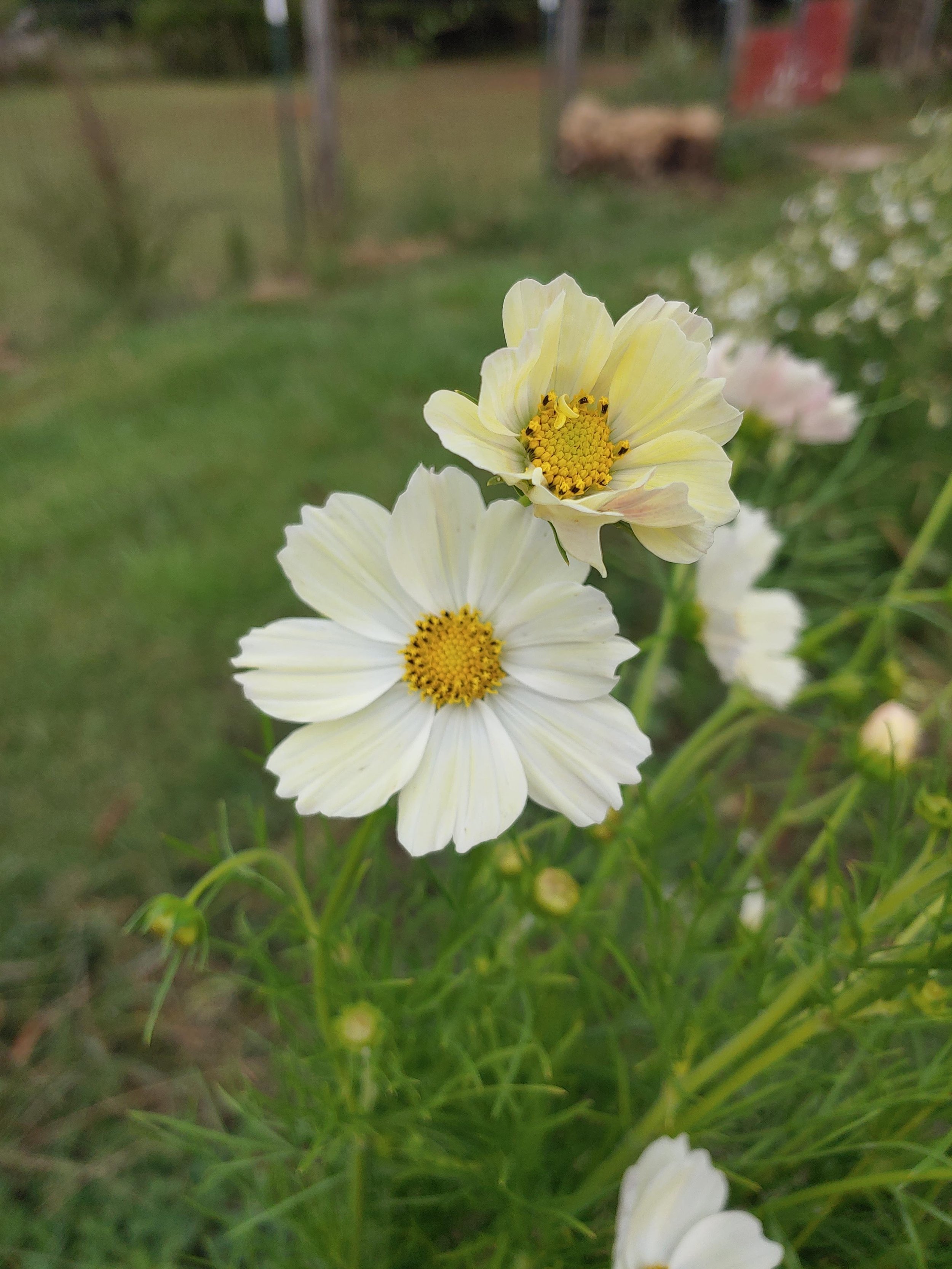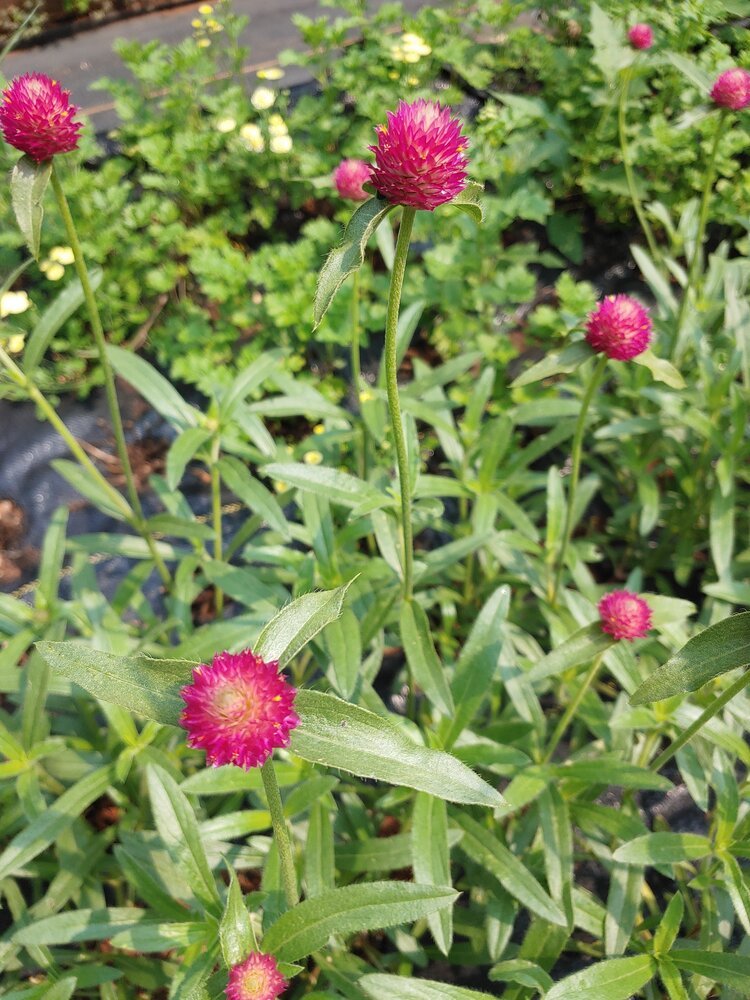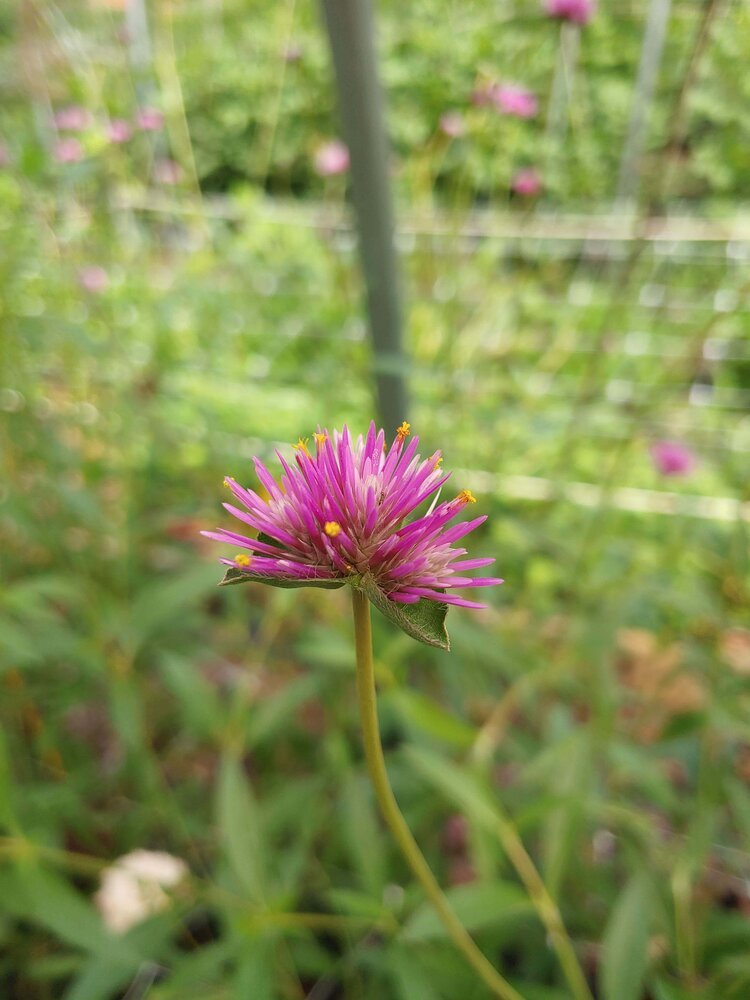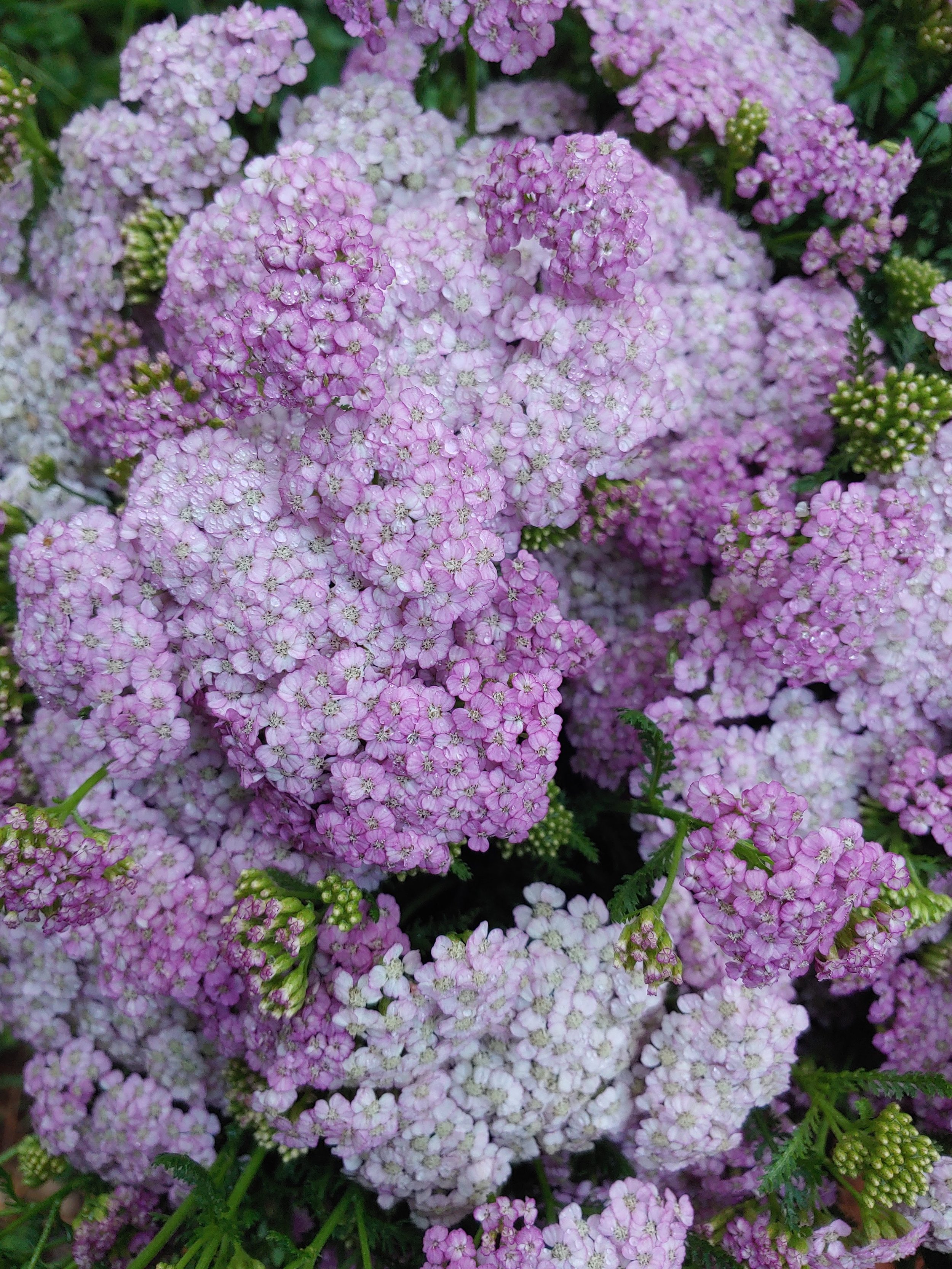
The Layered Garden Bed - Update
Everything is sprouting in my layered bed. The Tahiti daffodils are blooming. One small dahlia sprout came up last week due to the 3+ weeks of warmer than average February temperatures. But the last 3 days of frosts killed it off. It will resprout though! The concept is working beautifully so far!
If you missed Part 1 of this project, click here.
The Layered Garden Bed
While relaxing a bit before Christmas, I was browsing Sarah Raven’s Cut Flower Garden. I read about a method of planting bulbs in a layered method— but in a garden bed setting. I’m familiar with this process for bulb pots. But I’d never considered it on a larger scale.
But why not? Of course I needed to give it a try! I filmed the process of planting the bed and I’ll report back occasionally as the season progresses.
My Favorite Perennials to Add to Dahlia Bouquets
Y’all know I love Dahlias but my second love is perennials! What’s not to like about plants that you plant once, give a bit of love once or twice a year and then enjoy their amazing show year after year!
There are some well known Fall perennials but I’ve been doing a lot of work over the years to find some more unique plants to add to my collection.
Sedum and Japanese Anemones are two of the most common autumn perennial choices but they are actually two of my favorites because they are so easy to grow.
Sedum is about as close as you will get to a plant it and forget it plant- drought tolerant, rarely bothered by pests, lasts forever in an arrangement, holds up out of water for days. I grow a couple of varieties but my favorite is still Autumn Fire (the darker version of the well known Autumn Joy). Really all you are looking for with sedums is enough stem length for a bouquet— just make sure the variety is at least 20” tall and you’ll be fine. They like full sun and you can easily create more plants by dividing every few years or propagating via rooting the leaves.
Japanese Anemones are a shade lover here in our warm climate- Partial sun. If you only have a full sun area you may get some sun scorch but as long as you give them plenty of water, they’ll still flower well. They tolerate our heavy clay soil very well- I think because the clay holds water and they prefer their roots to be cool. Once again, you want to look for varieties with a taller stem length- 22” minimum. There are single and double varieties in whites and various shades of pink. They are a bit shorter in vase life - harvest them once the first bloom is very mature and the secondary buds have begun to open.
Now- a few things that aren’t quite as common. There are several really good shrubs that make great cuts for bouquets and bloom/berry in the fall.
Snowberry is a new favorite for me. I had my first snowberry crop last year and I loved it. I’d plant 100 more bushes if I had room. Snowberries are a medium sized shrub that come in white and shades of pink. They flower in early summer and then those flowers fall off and begin to produce berries. They start off green and then turn either white or pink depending on variety. In my climate (7b), they are harvestable in September. This shrub is easy to grow, I was able to get a small harvest on my second year (I planted 2 year old plants) and deer don’t bother these!
Caryopteris- You’ve heard of this one I’m sure— but have you seen the new colors available? For years, caryopteris has been out there in various shades of blue/purple. But now there are white and pink versions available and even some lighter blues. Some of these new varieties are shorter so you definitely need to check flowering plant height before you buy. I grew Caryopteris Pagoda Blush two years ago and loved it! I was warned beforehand that it’s cold tolerance for our climate was marginal. And - that came true when we hit mid teens one weekend last March. So be forewarned that the newer varieties aren’t as cold hardy. But if you love blue, grab one of the older types (they are taller anyways) and add a new shrub to your garden.
Beautyberry is another great fall shrub. I can’t speak on growing it yet because we are just adding it this year.
Dusty Miller- We definitely need a perennial foliage. Dusty works great in spring and fall in my hot climate, hates the summer but always pulls it out by late fall. I grow mine in a hoop house because I’ve noticed far less disease issues if you keep the rain off it. Candicans is my favorite variety- this is the lacier type. But New Look is great too— more solid leaf type.
Mint- This is my other Fall favorite green (actually it works all season long). You want to make sure mint is mature when you cut it- the stem should feel fairly stiff about 5-6” from the top. It’s the type of plant you will need to trial a few times to get the harvest stage correct. Apple Mint is my personal favorite but most varieties of mint work well- just make sure they grow tall enough!
A few others that I wanted to mention- these aren’t necessarily “fall” perennials- more like all season perennials but I think they look especially good with dahlias. Agastache- comes in lots of colors now. The bold colors hold up well against the bold dahlia colors. Salvias- Same thing here- so many color choices. Agastache and Salvias work great because they will bloom once in the spring, you can cut back and sometimes get two more blooms before your first frost.
Clematis are another favorite. Most clematis bloom before dahlias but if you leave some blooms on the plant- you’ll get the awesome whirlygig seed pods. I think every fall bouquet should have some texture and these are my go to for adding texture.
Last but definitely not least if you haven’t jumped on the heirloom mum train yet— it’s time!
Heirloom mums are quite possibly the prettiest flower you can add to your dahlias. The colors are quintessentially fall! In my climate, they are perennial so I’m listing them here. But if they aren’t cold tolerant in your area, grab some mother plants and just root out your stock once a year. I’m not going into detail here about how to grow them because that’s another 10 blog posts probably. But you can’t have a list of fall perennials for dahlias without mums!
Fantastic Annuals to add to your Dahlia Bouquets
Dahlias are amazing and gorgeous and make a beautiful bouquet on their own but sometimes you want a bit more. This is the first of a 2 part series on great flowers to add to your dahlias bouquets.
For reference, I’m zone 7b and our dahlias mostly bloom August through October so I’ll be steering the discussion toward fall bloomers. First up- we are going to talk annuals. Part 2 will be fall perennials.
The basis of a good bouquet is foliage so let’s start there.
Scented Geranium is one of my favorites! So many delicious scents - my favorites are Attar of Rose and Chocolate Mint. You want to make sure you are buying a variety that gets tall enough for cutting- minimum 2’. Scented Geranium is also perfect because it’s a self perpetuating annual. You buy your mother plant once and then take cuttings at the end of fall, root over the winter and you’ll have it again next year. If you are zone 8 or above, you can often over winter it as long. If you get a random really cold snap- throw some mulch around the crown and give it until mid May to wake back up in the Spring. It takes awhile some years— really needs warm soil to begin growing again.
You’ll need to experiment with harvest stage because the stems do need to be mature to avoid wilting in the vase. Stems usually require an overnight conditioning period in water to fully hydrate. If they are still wilty the next day, then they were cut too early. You are looking for the stem to be hard about 6” or so down from the top. It’s hard to describe in words so that’s why I say it’s a process you’ll need to experiment with until you get the feel for it.
Silver Shield Plectracanthus is another favorite. Scented Geranium and Silver Shield are two of my standby’s because with Scented Geranium you get a nice warm bright green shade and Silver Shield gives you a dramatic cool gray. This allows you to create different color schemes for your bouquets from just two foliage types.
Silver Shield is grown from seed. It’s a slow grower so you’ll want to start it around April and then get it planted outside once your soil is sufficiently warm- don’t put it into cool soil. It’ll take a while to get fully mature enough to cut but it times out perfectly with when dahlias are at their peak.
Once again, you’ll need to experiment with maturity stage when cutting- you are looking for the stem to be hardened off around 6” down from the tip. Condition overnight in a cool spot in water. Silver Shield holds up so long in the vase that it usually begins to root in the water. This also means that you can take cuttings in late fall and keep your plants going through the winter inside your house and replant next spring. I love self perpetuating plants!
Now let’s talk flowers!! A lot of the best additions to dahlia bouquets are quite common. But that’s okay because you don’t want to compete with the stars of the bouquet. Let’s talk types and varieties first and then culture because the growing process is pretty similar for most of these.
Cosmos are a personal favorite. Nothing like a fluttery butterfly like bloom hovering over the top of your bouquet. Their wispy nature adds movement which is important to keep your bouquet natural looking. Personally I prefer single cosmos but I know a lot of folks like the double types. My favorites are Sensation Purity (White Single), Double Click Cranberry, Rubenza (Single Burgundy), Kiiro (Small Single Yellow), and Sulphur Cosmos (the orange and yellow ones).
Celosia is my other favorite fall annual. Nothing like the texture of it in a bouquet. There are cut and come again types like Flamingo Feather and Flamingo Purple (these get big- give them space!). Cockscomb (the brain types) are mostly one and done. The chief series cockscomb can be pinched but a lot of the other varieties are single stem cuts. Totally worth it though in my opinion!! I also love the Celway series- these are the spiky types. They have a wonderful color range that works so well with dahlia hues— try the Terracotta, goes with everything in the Fall!
Zinnias- of course! Personally my favorites are the Oklahoma varieties- I prefer their smaller size and colors but the big Benary types work well too. The important thing with zinnias is to make sure you are getting a cutting variety (short bedding types won’t work for bouquets). One plus to the Benary types is that they have some disease resistance which can be handy for Fall growing in humid climates.
Nicotiana- I love nicotiana for so many reasons. It’s beautiful, smells amazing but my favorite thing- It attracts hummingbirds! I’ll grow it on my farm even if I never cut it again just to see the hummingbirds. I can’t tell you how many times I stop and watch them every fall! This past fall I tried the Bronze Queen variety— chocolately brown! It’s gorgeous with fall toned dahlias. I love the standard white too- great for cool toned bouquets.
Sunflowers- My favorites are pro cut gold (yellow with green center) and pro cut plum (beigey and plum/maroon shades). Space them closely (6”) so they don’t develop huge heads. You don’t want them to compete with your dahlias.
Peacock Orchids- This is a bulb grown flower that you plant in the late Spring to early Summer. You’d think something like this would be a perennial but I’ve never been able to get them to flower a second year. They’ll grown green leaves but never any flowers the second time around. They are an affordable bulb though so you can replant each year. Peacock Orchid is the common name- it’s in the gladiolus family (Acidanthera murielae).
Gomphrena- My favorite variety is Fireworks. It’s pink with small orangey yellow tufts that look like fireworks emanating form the globular flower.
Quick primer on growing hot season annuals: All the above flowers can be grown from seed (except the Peacock Orchids). Zinnias and Sunflowers will work well from a direct seed. All of them can be started as transplants and that’s what I would recommend. The important part of growing annuals for fall bouquets is timing. You want to have a fresh planting of these annuals for your fall bouquets. Don’t plant in spring and then expect them to still be looking nice in September. Plant a second succession!!
For Sunflowers, begin seeding in late June and then plant more seeds each week or every 2 weeks (this is for single stem varieties, branching types- plant every 3-4 weeks). You can continue planting sunflowers until you are about 60 days from your first frost date.
For Zinnias and cosmos, plant new transplants around the 3rd to 4th week of June. (You’ll need to start those transplants mid to late May).
For nicotiana, begin seed in early June. Seed takes a bit to get going. But once you transplant, nicotiana will bloom with 4-6 weeks. It’s a quick one! And will continue to bloom until frost if you keep cutting it.
Celosia- I would plant 2 successions to have enough for all of fall. Plant the multi stem types in late June and then the single stem types in early July and then again 2 weeks later.
Gomphrena- transplants need to be ready to go in the ground early June for an early Fall harvest.
So what are your favorite annuals to add to a dahlia bouquet?
Are you signed up for the Dahlia Lovers Newsletter so you’ll receive Part 2 of this series? Click Here!
For more info on warm season annuals, check out these past blog posts:
Planting in a Heat Wave
What to Plant and When
Tips for a Great Summer Cut Flower Garden
3 Plants Perfect for Natural Pest Control
Every year I try to reduce the need for pesticides on the farm and mimic the ways of nature. And each year, as I spend time observing the natural world I learn a bit more.
But I do find that I keep coming back to these 3 plants, over and over again.
(I’m farming in hot humid zone 7b in South Carolina but these plants have a wide range of hardiness and all of them could be grown as annuals if they won’t perennialize in your zone. )
These first two are for creating beneficial environments. Creating an environment for beneficials to breed is an important step to creating your own natural pest control system.
1. Yarrow- First off- it’s gorgeous and so romantic looking. It makes a fantastic cut flower and blooms in the “awkward gap” -that time when your spring stuff is done but summer blooms aren’t here yet. With an average hardiness zone from 3-9 (always check your individual variety first), yarrow will find a place in most gardens. Drought tolerant and it stays green all winter (at least in warmer climates). Can be easily started from seed or bought as a mature plant. Propagate by divisions every few years to keep it blooming more profusely. What’s not to like?
But why do we care about it for natural pest control?
- Yarrow is a first year flowering perennial so we get the pollinator attracting benefits from the flowers without having to wait. It’s also an umbellifer which means it has loads of small flowers to make up the main flowering head— therefore more sources of pollen unlike lots of flowers with only one center per flowering head. (Also if you use yarrow for cutting, you have to wait until the plant is fairly mature so you’ll still get some pollinator benefit before cutting.)
- Yarrow has a decent amount of plant mass at it’s base and stays evergreen so it makes a great home for overwintering beneficials— ladybugs often lay their eggs in the foliage. It attracts predatory wasps and hoverflies too.
How I’m using it on my farm:
- I have a large row of “cutting” yarrow but I’ve begun adding a plant or two here and there around crops who often have pest problems. Yarrow also comes in short versions- I’m beginning to use these more when I need the plant for pest control because they are very easy to tuck in small spaces.
2. Alyssum or Sweet Alyssum- Alyssum is a low growing plant often used as a ground cover and it has the most delicious golden honey scent when blooming. It comes in loads of beautiful colors- pinks, peaches, yellow, white, purple. Often used as a beautiful multi-colored carpet style planting. Grows in full sun or part shade— does a bit better with a touch of shade in hot weather climates. If you don’t have shade, it may go a bit dormant in hot weather and wait until it cools off to bloom. Easily grown from seed- transplant or direct seed. Self seeds well - doesn’t spread too far but can self perpetuate itself. I’ve had best success with direct seeding in the fall in my climate. Hardiness zone 5-9.
Natural Pest Control Uses—
- the low growing plant habit provides breeding environments for beneficials such as parasitic wasps. These are minute wasps that don’t sting. Alyssum also produces a lot of nectar so will draw in loads of pollinating insects.
How I’m using it on my farm:
- I began planting it underneath my sweet peas. I was looking for an early flowering plant to draw in beneficials to eat the aphids that always show up on my sweet peas. I saw some improvement the first year but discovered I needed more than a few plants. So I now I used it as a carpet beneath vining plants.
- I also use it inside my foliage tunnel. Since the majority of crops in that tunnel are grown for foliage and rarely bloom, I discovered the population of good to bad insects was out of balance. So I began interplanting alyssum to add a flowering element to the tunnel. I’m also adding a short variety of yarrow this year for the same purpose. These should attract more beneficial insects to the foliage tunnel.
Sweet Alyssum growing at the base of Jasmine
3. Garlic Chives- These make a great cut flower and are one of the most dependable later summer perennials. Easy to grow from seed. Will self multiply from self seeding or you can divide after a year or two. I’ve started just keeping a “bank” of these that I divide whenever I need to interplant with a pest prone crop. These have been a longstanding go to on my farm for natural pest control. Hardiness zones 3 to 9.
Natural Pest Control Uses—
-They attract aphids like nothing you’ve seen! Alliums of all types are good for pulling aphids away from your desired plant and onto the allium. However, a lot of alliums produce the green leaf portion of the plant and then go dormant and disappear as soon as flowering happens. Garlic chives stay green all during the frost free part of your season. They will go dormant during the winter in zone 7b and colder.
How I’m using them on my farm:
- I began using Garlic Chives as a trap crop for aphids when I grew roses as a cut flower crop. (But that was years ago). These days, I have them interplanted among my ranunculus to see if they’ll help control the aphids this spring. I also plan to spread them throughout the farm this year- some interplanted among aphid prone crops and some just on the farm edges. They will create more “banks” of natural pest control that I can use as needed.
There are loads of good plants to aid in natural pest control but these are 3 of my favorites and my constant go-to’s! What plants do you use for natural pest control?
